The Nutrition Guide


2022 Digital Edition
I’m Cam, a certified dog nutritionist and dog research enthusiast. It’s my mission to educate as many dog owners as possible on the correct way to feed their dogs.

Click on the PLAY to watch the course/ videos online. To watch the intro, just click it.

Welcome to the pack.
I’m Cam, certified dog nutritionist and dog research enthusiast, and it’s my mission to educate as many dog owners as possible on the correct way to feed their dogs.
I’ve spent years working with owners to prevent and cure canine illnesses through the latest canine nutrition science.
My life learning about “What is best for dogs?” started as a dog runner and a dog day care owner in London. Spending everyday with dogs gave me a unique understanding of what they are and what they really need to be the happiest and healthiest they can be.
During this time, living my pack, I saw that in so many ways dogs are like us humans. They are evolved from the same earth, from the same drive to survive, fuelled and protected by the same natural resources; fresh food, fresh water, companionship, love and shelter.
What has been evident throughout my time working with dogs, is that it’s the everyday decisions that you, the owner make, that have the biggest effect on the physical and mental wellbeing of your dog.
What’s been so scary to me, is how easy it is for owners to make the wrong decision. A wrong daily lifestyle decision can lead to early onset of degenerative disease, and simply, a shorter and less healthy life for the dog you love.
I see it all the time. Told one thing by the Vet, another by a close friend and recommended something completely different by the trainer or breeder. Then you go online and it’s to chaos.
It’s this misinformation that’s the reason why half of dogs are dying from cancer, a disease rooted in lifestyle and environment factors, and in particular, poor dog nutrition. Half of dogs.
This video series is to help you make the most important daily decision, with simplest and most accurate information and guides on dog nutrition.
In this guide, I’ve condensed everything I’ve learned about dog nutrition into an accessible resource that you can refer to throughout your dog’s life.
In part 1 we make buying dog food easy, know what to avoid and who to trust. For those of you who don’t have too much time on your hands.
In part 2, we’ll look at the simple must know doggy truths.
In part 3, it goes into the basics of dog nutrition, if you’re interested.
In part 4 you’ll learn how much you should be feeding your dog.
Part 5 contains all my recipes and how to use them.
And part 6 answers those frequently asked questions, like is my dog’s poo healthy and which supplements are best?
On behalf of your dog, thank you for reading or watching my dog nutrition guide. If you have any feedback on my meal plans or have any other suggestions, I’d love to hear from you.
Cam, the Dog Nutritionist
1. The problem with Dog food 2. Real dog food
Dog Food is Real Food
What is Puppy Food?
The Doggy Food Groups Balancing Meals Foods to Avoid Cooked or Raw Food? Why Raw Dog Food
3. How much should it feed my dog or puppy?
The Body Weight Index
Contents 6: Making and Storing Your Dog Food How to Make Raw Dog Food How to Make Cooked Dog Food 7. Sourcing the Right Food Meat, Fruit and Vegetabels 8: Food Transition Guide Food Transitiion Guide Dealing with a Fussy Dog 9. Supplementing your Dog’s Food Supplements 10. Spotting Common Health Issues
The Body Condition Guide
Feeding Times and Fasting How do I put my Dog on a Fast?
5. Recipes How Often Should I Feed Each Meal? Everyday Recipes Complete Recipes
Quick Meal
Common Health Problems Answer is in the Poo If Bowel Movements Could Talk 11. Your New Life Together
Print Pages
The
Breakfast Recipes 5 8 9 10 11 14 15 16 17 18 19 20 21 22 23 24 25 27 29 30 31 32 33 34 35 36 37 37 38 39 40 41 42 43 44
Chapter 1
The Problem with Dog Food

Processed dog food
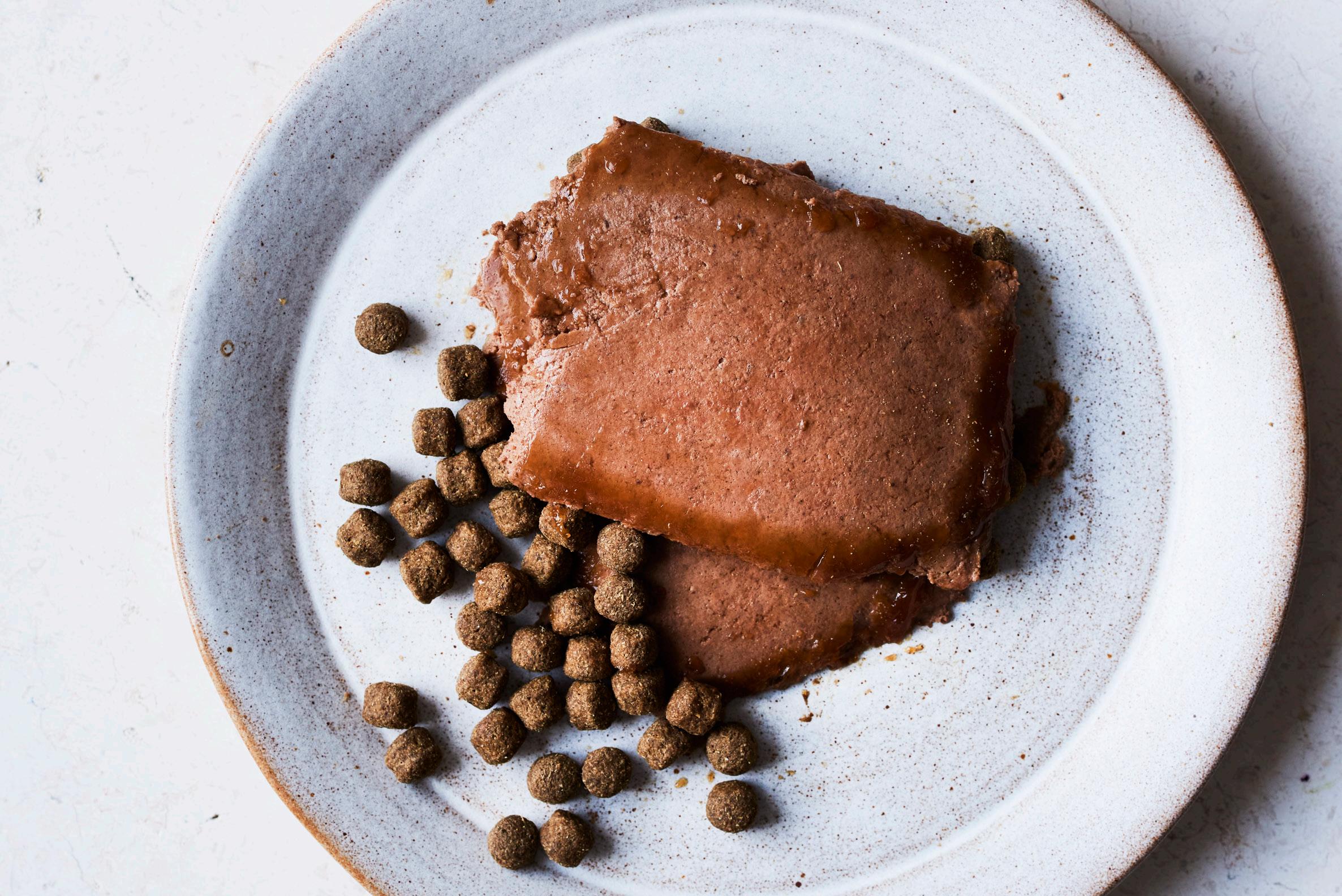
Veterinary spending has doubled over the last 10 years and dogs are getting sicker than ever before. What’s going on in the dog world?
Everyday owners make decisions that have an enormous impact on the mental and physical wellbeing of their dogs. The big decisions are which food to give them, how much exercise they have and what type of training they receive? The owners who make the right decisions, have the happiest and healthiest dogs: Life is often simpler than we think. What is scary, is the number of owners who, through no fault of their own, make the wrong decisions over what to feed their dog. Told one thing by the Vet, another by a close friend and recommended something different by their trainer, they are often left helplessly confused and resort to outsourcing the problem to dog food brands that work hard to build trustworthy reputations. Sadly, this can be a costly mistake.
Modern dry and wet-tinned dog food diets are at the heart of a terrible descent in dog health. This food is cheap to make, highly processed, and packed with unnatural cheap filler ingredients that your dog can’t digest. It’s like feeding your child a diet of strictly crisps and low-quality chicken nuggets.
The University of Helsinki conducted an experiment where dogs that ate processed foods for their whole lives, were weaned onto raw food for 3 months. These dogs showed an 81% decrease in disease markers in their bloodstream. Conversely dogs that had eaten raw food their whole life, were weaned onto kibble for 3 months and they showed an increase in disease markers of 353%.
When you consider that 80% of Dog’s eat dry food it’s easy to appreciate why dogs are declining in health. It shouldn’t be difficult to feed your dog in a healthy way, and yet, when I speak to dog owners about making dog food they run as if the hoovers out. How have we developed a fear of making food for our dogs?
Veterinary Cancer Society

help@thedognutritionist.com
www.thedognutritionist.com

Half of dogs are dying from cancer at a younger age than they should.
6
The Veterinary Industry
A major cause for confusion in the dog world is that veterinary professionals rarely take a holistic approach to health.
Did you know that at college, the average vet spends only 19 hours learning about nutrition for all animals?
It’s a remarkable statistic when you consider how much of an impact our dog’s diet has on their health and wellbeing.
In fact, it’s scarier than that. Vets are not only under informed, but they are also regularly misinformed. All of the nutrition courses that Vets take are created by large companies who are financially invested in the outcomes. They are taught by these businesses to recommend their “medicinal” dry and wet dog foods to sick dogs, the same foods that are typically at the root cause of illnesses. It’s a mess.
Complete Dog Food lies...
The FEDIAF and AAFCO are the regulatory body’s behind pet food standards and they set the nutritional requirements for dogs and for puppies. Not mother nature as it turns out.

The members of this regulatory body happen to be the companies who only produce mass market, low quality processed foods.
If you look at the nutritional guidelines for a complete meal, you’ll see how comically hard they are to follow and it’s no wonder owners don’t want to take on the enormous and complex task of a simple homemade meal for a dog.
The term complete is extremely misguiding. You cannot feed a dog the same meal every day and consider that healthy. Also a “complete meal” made up of the worst quality ingredients and synthetic additives to ensure its complete, is no-where near equal to a balanced fresh food meal. They are worlds apart.
The requirements for puppies make them seem like completely different animals ,that need completely different diet. In reality this is all designed to make you give up and buy food, because let me tell you, dog nutrition is really simple.
Just lke us, a basic knowledge of balancing a diet, and providing a variety of foods, will ensure your dog is getting nutrition that ensures their long term health.
Making meals is easy, it’s the healthiest, it brings you closer to your dog and it will save you’ll save loads of money in the process. In this course, we’ve provided all the recipes you need, so stress no more and trust you’re doing the right thing for your dog and you’re going to have the healthiest pup in the park.
help@thedognutritionist.com
www.thedognutritionist.com


7
Chapter 3
Real dog food

The food you see in the refrigerated section at the supermarket, fresh foods, that’s what your dog needs to eat. Sounds simple right?
If you have a basic understanding of dog nutrition, you can balance normal fresh foods, so that your dog is provided a varied diet that will work to keep them healthy, save you potentially thousands in Vet bills and most importantly, mean you spend a longer and happier life together.
Correct diet is the biggest determinant of health.

Your dog can’t open the freezer and finish a pot of ice cream, they can’t swing by a fast-food joint, they don’t drink too much alcohol throughout the week and they can’t smoke. They don’t have the choices that test us, they can live the healthiest life you know, if you choose so.
Dog Food is Real Food
help@thedognutritionist.com
www.thedognutritionist.com


9
What is puppy food?
Puppy food is dog food, pretty much. In fact, once your puppy is around 3 months old, it’s onto adult dog food.
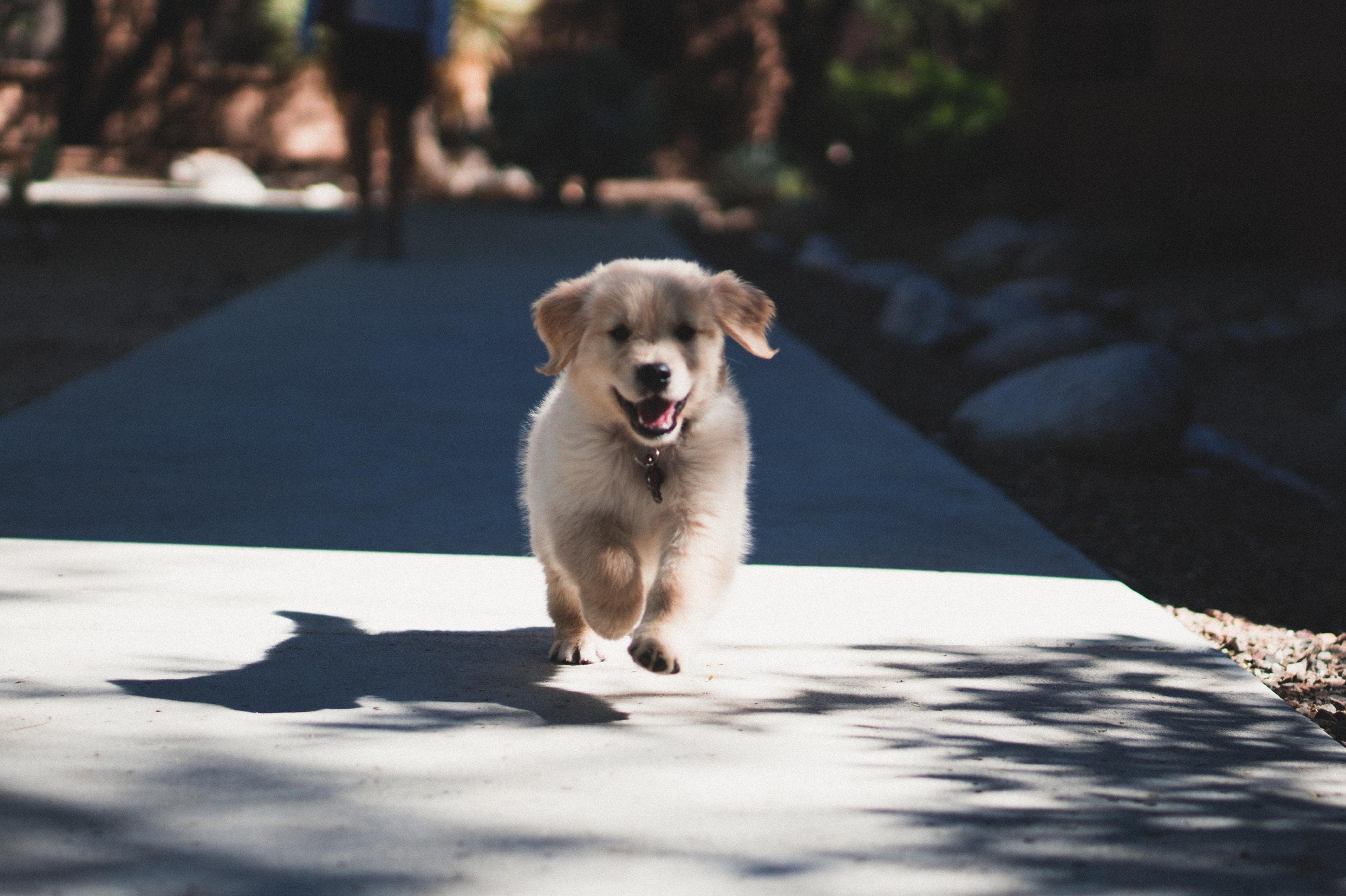
You thought puppy food was for a whole year? Nope! The truth is most puppy food is simple a slightly more expensive product. The range of puppy food normally helps to extend the product range rather than being an essential part of a young dogs diet.
With all the species on this earth, there’s no yearlong nutritional balancing act, most mammals go from mothers milk, to halfdigested food, to normal food – fairly quickly.
This is the standard process for most mammals and it’s what you need to simulate with your own puppy’s diet (you don’t have to chew their food for them!).
Get The Puppy Feeding Plan here.
help@thedognutritionist.com
Natural stages of puppy feeding
www.thedognutritionist.com

6-10 Weeks: Early Puppy Food (Easily digestible fresh food) 11-15 Weeks: Later Puppy Food (Introducing raw bones) Adult food

3
Weeks 3-4 Weeks 6-10 Weeks 11-15 Weeks 16 Weeks Mothers Milk Breeder Food (should be an easily digestible fresh food but this isn’t always the case)
10
The Doggy Food Groups
There’s no need to overcomplicate your dog’s diet. All you need is a basic understanding of the doggy food groups and how to integrate them into your dog’s diet. Or, simply follow the recipes provided on page 23
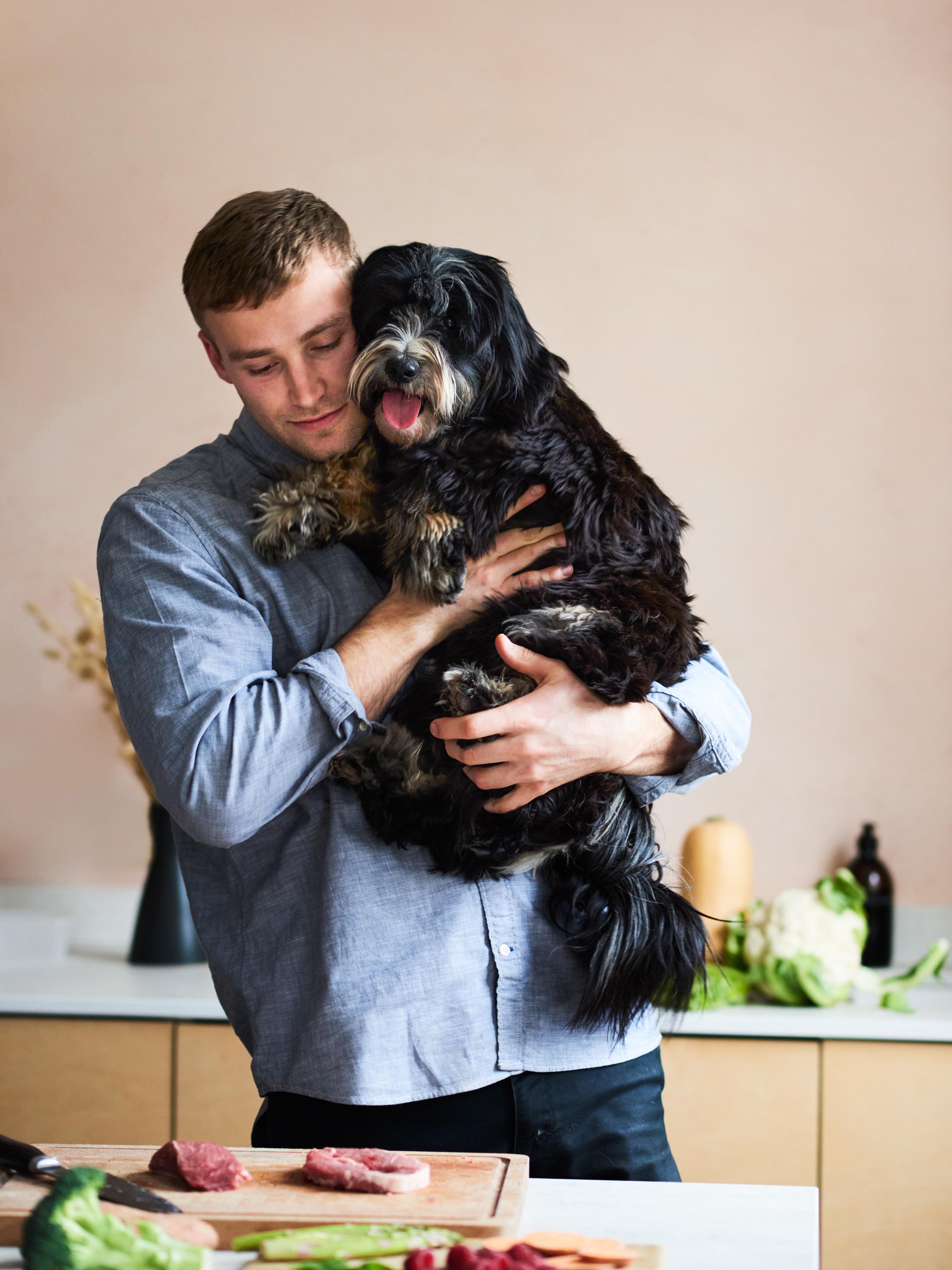
These are the foods your dog has evolved to eat.
help@thedognutritionist.com
www.thedognutritionist.com


11
Meat
Meat will provide most of the protein your dog needs. Proteins are catalysts for bodily functions and the building blocks of all tissues and organs of your dog’s body, including their muscles, joints, skin, and coat. You’ll also want to include fish in your dog’s diet for those super beneficial Omega–3 fats.
It’s important to remember that not all protein is equal and the quality of the protein you provide your dog will determine much of their overall health and physiology. For example, protein powder or processed meat meals are not the same quality as fresh steak.
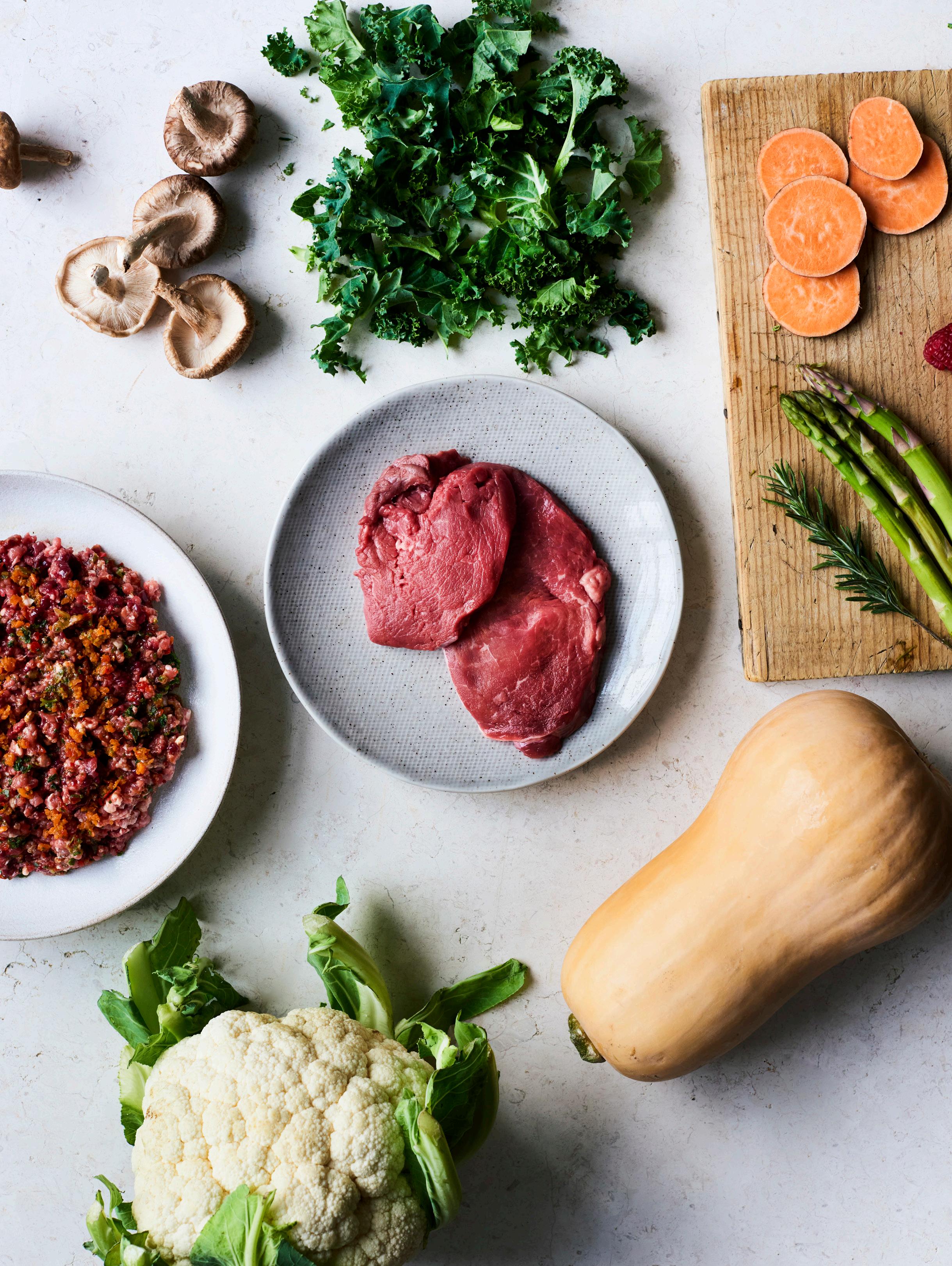
Organ Meat
Organ meat is like a doggy multivitamin, providing your dog with a significant amount of their recommended minerals and vitamins.
Liver is the most nutritionally dense organ, but you can use all organs in your dog’s diet – don’t be scared. I know it isn’t particularly glamourous, but organ meats are super healthy and will provide your dog with a huge range of nutrients.
Raw and Meaty Bones
“Give the dog a bone” is not just an expression – it’s a necessity that
many dog owners are unaware of.
Your dog needs to eat raw, meaty bones for calcium. It helps your dog to grow and is also used to clean their teeth and keep their breath fresh – it’s a dog’s toothbrush. As you might have noticed, dogs don’t chew food. Instead, they need to gnaw to keep their mouth hygienic and healthy.
Even if you choose to feed your dog cooked food, I recommend also giving them raw, meaty bones because they’re a natural part of dog’s diet and are also a stimulating treat that releases positive endorphins.
Remember to never feed your dog cooked bones as they can splinter in their digestive tract, causing internal damage.
Carbohydrates
Nutritionally, dogs don’t need carbohydrates*. Although they can still eat them, they shouldn’t have them regularly because they aren’t a natural part of your dog’s diet and, over time, they’ll put your dog’s digestive system under pressure.
Carbohydrates always need to be cooked and should only really be used if you’re giving your dog leftovers or if you’d occasionally like to bolster their meal. In general, carbohydrates shouldn’t make up more than 10% of their total diet.
help@thedognutritionist.com
www.thedognutritionist.com

12
Fat
Fat is the most preferable source of energy for dogs, as they’re less able to digest starchy carbohydrates than humans. Fat helps their bodies absorb vitamins and Omega–3. However, much like protein, not all fats are equal; there are healthy fats and unhealthy fats. Put simply, natural whole food fats are healthy and processed food fats are not.
Meat will provide a lot of the fat your dog requires to live, run around, and grow healthily. Also, the DHA fatty acids found in fish are great for your dog’s heart and are also a natural anti-inflammatory.
In terms of forming a doggy recipe, you should keep in mind that there are fatty meats and non-fatty meats. There is less fat and more protein in lean meats and more energy and less protein in fatty meats, so you should aim for a range of these meats in your dog’s diet.
Providing your dog with more fat than they need is a big no-no. There is a very real danger of obesity, which almost always leads to an increased probability of ill health. If you follow my recipes, you’ll be feeding your dog the correct amount of fat.
Oils and Seeds
These are used to help make a complete and balanced recipe. Oils can be used to slightly increase the fat or energy levels in meals containing lean meats.
Fruit and Vegetable
Fruit and vegetables, both raw and cooked, provide your dog with many nutrients that can’t be found in meat and are compulsory to form a complete diet.

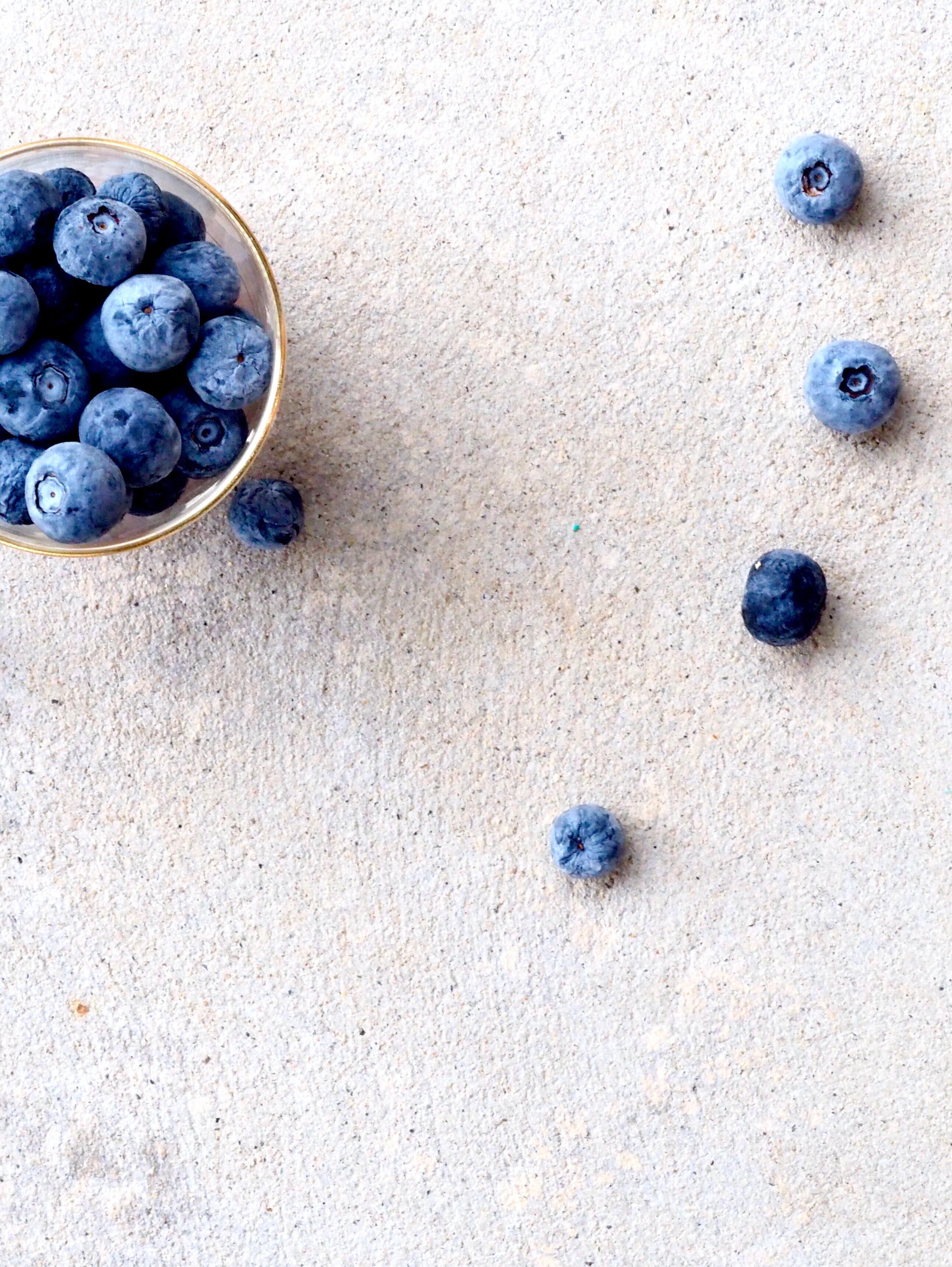
Cooked mushrooms contain a whole host of immunity-building and anti-cancerous qualities. They’re a super, super food for dogs. Cooking the mushrooms destroys the toxins and allows your dog to benefit from the incredible nutrients and immunity-building polysaccharides.
Be extremely careful if you’re picking mushrooms in the wild – you’ll need to know what you’re doing.
Eggs
Eggs are the most bioavailable and easily digestible source of protein, so they’re one of the healthiest additions to any doggy meal. To avoid any waste, the shells can be used as a source of calcium to help balance meals. Keep in mind that raw eggs are best for dogs.
13
www.thedognutritionist.com help@thedognutritionist.com
Balancing Meals
The doggy food pyramid can be used to help you balance your dog’s meals, or really, make sure you’re not giving them too much or too little of something.
Much like you, dogs weren’t designed to eat the same thing every day. By varying their protein sources and all accompanying ingredients, your dog will receive all the proteins, vvvitamins and minerals required to give them a healthy and full life. Furthermore, receiving their nutrition from a variety of sources will be beneficial for their digestive system.
Below is a breakdown of each meal based on the key food groups for dogs.
Doggy Food Chart
help@thedognutritionist.com
www.thedognutritionist.com

Fish 10%
Meat Organ Oils Seeds Bone Veggies Fruit Carbs* 40-60% 10-20% 1% 2% 2% *20% max of occasional meals 10% 10% 5-10% 20% Supplements 14
Foods to avoid
Vegan and Vegetarian Diets

Well, this is awkward. Even if you would prefer your dog to follow a vegan or vegetarian diet for ethical or personal reasons, it unfortunately isn’t a healthy long term option. The arguments for a vegan or vegetarian diet are valid and rational, but, as we’ve established, dogs are primarily carnivorous, and they have been for 50 million years.
It’s only in the last 12,000 years that dogs have developed the ability to digest non-meat ingredients, which means that dogs simply don’t produce enough digestive enzymes to digest fruit and vegetables in the same way we do. They also have a shorter gastrointestinal tract than humans or herbivores, which is optimised to digest meat – not fibrous fruits or vegetables. As a result, a vegan or vegetarian diet will leave your dog nutritionally deficient and potentially very unwell in the long term.
If you’re concerned about the environmental effects of meat, there are many ways you can offset your carbon pawprint, such as supplementing your dog’s meals with insect protein, sourcing more sustainable meat, and reducing your own meat consumption. If you’d like to find out more, click here to download our environmentally friendly guide and use code TDNEARTH to get a 20% discount.
Cooked Bones
Due to the cooking process, bones without moisture can splinter, which can be extremely harmful to your dog.
Chocolate
Dark chocolate or chocolate that has high levels of cocoa contains Theobromine, which is highly toxic in large quantities.
Grapes and Currants
This is a weird one. It isn’t known why or how they affect dogs, but they can cause kidney failure in extremely rare cases.
Onions, Leeks and Chives
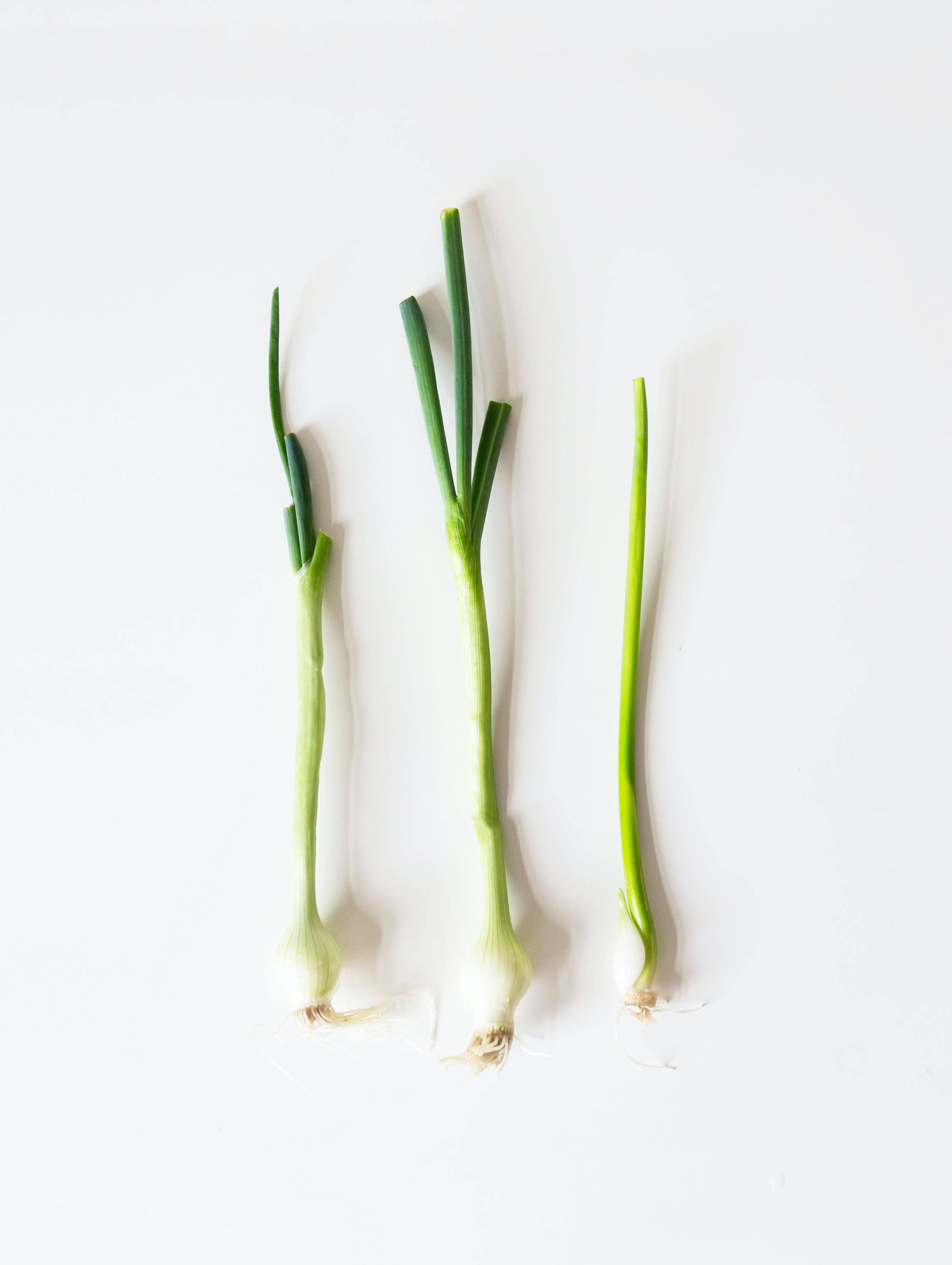
These vegetables contain a toxic compound known as N-propyl disulphide, which can cause anaemia in dogs. It would be hard for your dog to consume enough for it to be a serious issue, but they should be avoided to be on the safe side.
Xylitol

A human sweetener found in lower quality human products. Avoid.
help@thedognutritionist.com
www.thedognutritionist.com
15
Cooked or Raw Food?
At the dog nutritionist, we believe the healthiest way to feed your dog is on a raw food diet. As you may have guessed by now, raw dog food contains a combination of uncooked meats from a variety of animal sources, combined with fruits, vegetables, raw eggs and shells, raw bones, some fat sources, and a few dairy options.

There’s some debate as to whether raw food or cooked dog food is better for dogs. For example, some vegetables have more digestible nutrients when cooked, and others when raw. It’s perfectly fine to feed your dog both raw and cooked food if their gut is used to the combination.
If you’re reluctant to go raw, you should be assured that a freshly cooked food diet is also extremely healthy and all the meals in this guide can easily be cooked

www.thedognutritionist.com help@thedognutritionist.com

16
Why Raw Dog Food?
A recent study conducted in a leading Veterinary journal linked raw food diets with positive side effects such as DNA repair, increased immunity, faster metabolism, and decreased inflammation. Many of the enzymes, amino acids, antioxidants, and vitamins available to dogs in raw food are killed off or damaged during the cooking process, which means your dog is not receiving the full benefits of the food you’re serving.

Those who oppose raw diets state there is potential for an internal puncture or choking on whole bones. They also point towards bacteria that are resistant to the cooking process. However, according to the Raw Feeding Veterinary Society, every issue presented against raw dog food can be disproved.
Although humans tend to compare a dog’s eating experience to their own, they’re entirely different. Dogs know how to eat bones without choking or swallowing, and they derive huge benefits from doing so. Additionally, the bacteria present in raw foods are highly digestible by dog’s stomachs, which are up to a hundred times more acidic than ours. Therefore, if you’re searching for a way to provide the ultimate nutrition for your dog without exposing them to any harmful chemicals or additives, you should feed them raw meals.
Benefits of feeding your dog raw food
Higher energy levels
Cleaner, shinier teeth and fresher breath
Healthier skin Shinier coats
Faster/stronger/fitter dogs
Anti-inflammatory DNA repair
Stronger immune system
Healthier gut and more efficient digestion
Smaller and less smelly poop
Cost effective – healthy dogs are cheaper
help@thedognutritionist.com
www.thedognutritionist.com
17


Chapter 4
How much should I feed my dog?
How much food?
If you’d like more accurate guide, the body weight index will give you a good idea of how much to feed your dog or puppy, based on their weight and age.

Weigh your dog
1. Stand on the scales with your dog.
2. Then stand on the scales without your dog.
3. The difference between the two is the weight of your dog.
(Your dog + you) – (you) = weight of your dog
Choose a percentage
Most dog food companies recommend a higher proportion of food than this, I do not. If you add up treats, then this should be more than enough food.
Remember, this is a guide, increase or decrease as per your dog. Keep them athletic, not chubby, not skinny. Athletic.
What is your dog weight?
2% – 2.5%
2.5% – 3 %
3% – 3.5%
3.5% – 4.5%
for giant dogs for large dogs for medium - small dogs for miniature dogs
Is your dog...
A puppy (up to 1 year old) An active adult Skinny Chubby
+ 1.5% + 1% + 0.5% - 0.5%
help@thedognutritionist.com
The table
The percentage you pick can change, if your dog’s had a lazy day you can reduce, if they’ve had a busy week, you can increase.
KG 2% 2.50% 3.00% 3.50% 4.00% 4.50% 5.00% 5.50% 6.00%
2 40 50 60 70 80 90 100 110 120
3 60 75 90 105 120 135 150 165 180
4 80 100 120 140 160 180 200 220 240
5 100 125 150 175 200 225 250 275 300
6 120 150 180 210 240 270 300 330 360
7 140 175 210 245 280 315 350 385 420
8 160 200 240 280 320 360 400 440 480
9 180 225 270 315 360 405 450 495 540
10 200 250 300 350 400 450 500 550 600
11 220 275 330 385 440 495 550 605 660
12 240 300 360 420 480 540 600 660 720
13 260 325 390 455 520 585 650 715 780
14 280 350 420 490 560 630 700 770 840
15 300 375 450 525 600 675 750 825 900
16 320 400 480 560 640 720 800 880 960
17 340 425 510 595 680 765 850 935 1020
18 360 450 540 630 720 810 900 990 1080
19 380 475 570 665 760 855 950 1045 1140
20 400 500 600 700 800 900 1000 1100 1200
22 440 550 660 770 880 990 1100 1210 1320
24 480 600 720 840 960 1080 1200 1320 1440
26 520 650 780 910 1040 1170 1300 1430 1560
28 560 700 840 980 1120 1260 1400 1540 1680
30 600 750 900 1050 1200 1350 1500 1650 1800
31 620 775 930 1085 1240 1395 1550 1705 1860
32 640 800 960 1120 1280 1440 1600 1760 1920
33 660 825 990 1155 1320 1485 1650 1815 1980
34 680 850 1020 1190 1360 1530 1700 1870 2040
35 700 875 1050 1225 1400 1575 1750 1925 2100
40 800 1000 1200 1400 1600 1800 2000 2200 2400
45 900 1125 1350 1575 1800 2025 2250 2475 2700
50 1000 1250 1500 1750 2000 2250 2500 2750 3000
www.thedognutritionist.com
2 3
1
19
Perfect Pooch Figure
• Back hip definition
• A little puppy fat and no ribs showing
• Muscle definition as they mature
The Body Condition Guide
As you can see there’s definition in the hips and muscles. Perfect shape.
Less-Than-Perfect Pooch Figure

• Slight loss in back hip definition
• A square undercarriage
This is a not an unhealthy dog; it’s an example of what to watch out for when identifying whether there’s a bit too much treating going on!
Unacceptable Pooch Figure
• No back hip definition
• Totally square or rectangular body shape
This is not a healthy pup. No back hip definition shows that they have too much fat in their bodies, so you should reduce the size of their meals.

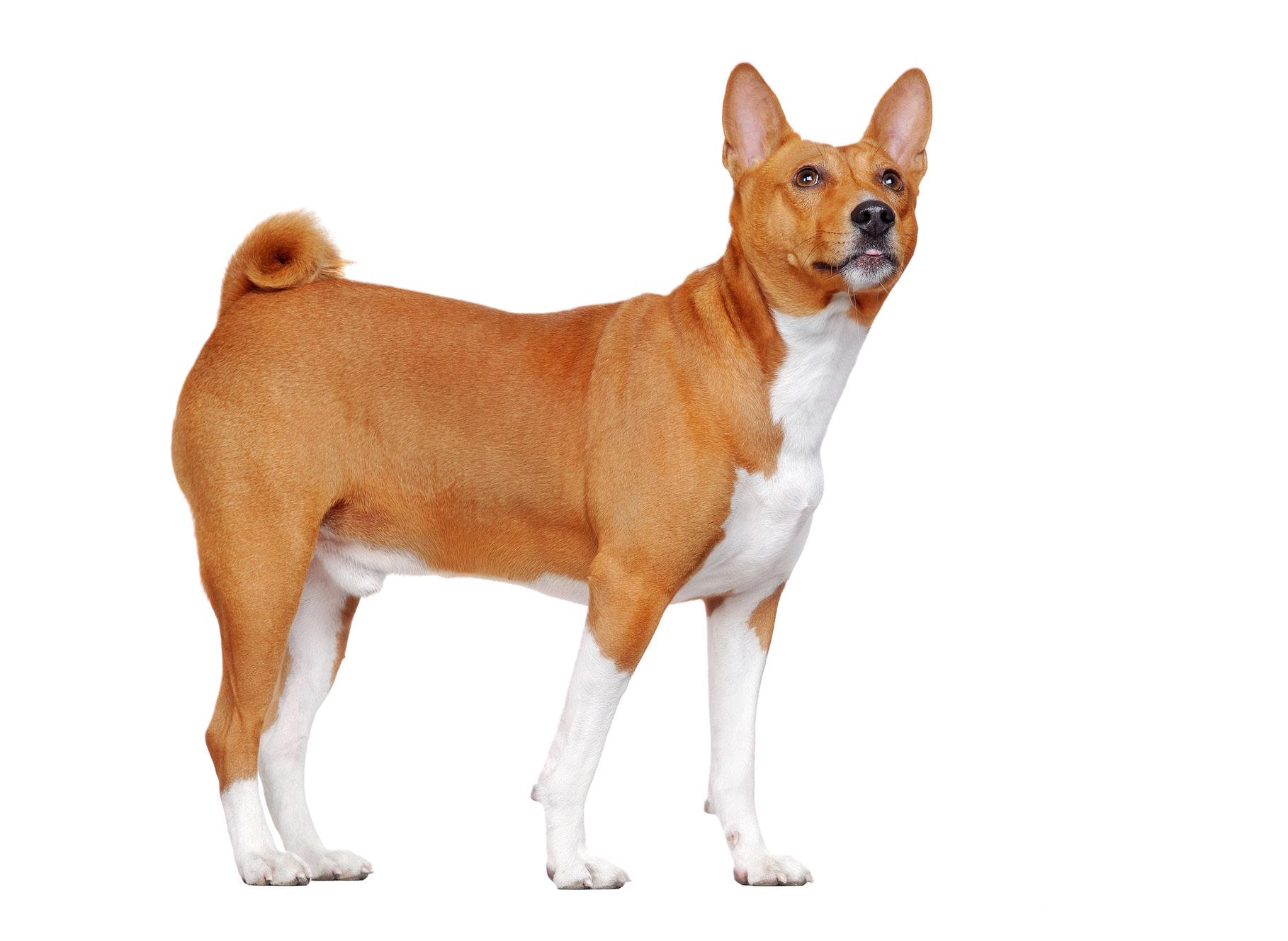
help@thedognutritionist.com
www.thedognutritionist.com

20
Feeding Times and Fasting
Feeding Times
- The healthiest way to feed an adult dog is twice a day within a six-hour period.
- Feed them one larger meal one smaller meal; this can be breakfast and lunch or lunch and dinner – whatever is more convenient for you.

- By feeding your dog within a six-hour window, with a few exceptions for light treats, you’ll give their digestive system 18 hours a day to recover.
Intermittent Fasting for Dog
Intermittent fasting is when you restrict your dog’s intake of food for 18–24 hours so their digestive system has time to rest and recover. Contrary to what many people think, fasting is safe and healthy for dogs and humans.
If your dog were in the wild with their ancestors, it’s unlikely that, as carnivores, they would have food readily available 12 hours a day, seven days a week. Fasting is a natural process for dogs and recent studies have shown that several healthy bodily processes are stimulated by the restriction of food.
Below are a few health benefits that might convince you to introduce intermittent fasting to your dog’s feeding schedule.
help@thedognutritionist.com
Body and Tissue Regeneration:
The periodic absence of food allows their body to spend more energy regenerating instead of digesting and absorbing nutrients. Healthier cells will replace unhealthy cells and body regeneration will take place.
Reduction of Harmful Bacteria and Viruses:
Fasting will increase macrophage activity, which defends your dog’s body against harmful bacteria, viruses, and other foreign substances. Studies have even shown that fasting can reduce the risk of cancer. It will also promote the growth of healthy bacteria in the gut, which results in a healthy gut microbiome.
Weight Loss:
Fasting reduces insulin levels, which decreases inflammation and encourages weight loss. Your dog’s body will also use excess fat stores as energy, thereby reducing their weight.
Boosting the Immune System:
Without needing to focus on digestion, your dog’s body will regenerate the immune system, leading to a multitude of other health benefits.
www.thedognutritionist.com
Below are a few health benefits that might convince you to introduce intermittent fasting to your dog’s feeding schedule.
21
How Do I Put My Dog on a Fast?
The easiest way to put your dog on a fast is to feed them once a day. If you want to feed your dog twice a day, you can create a fasting window by feeding them twice within the same six-hour period, as mentioned above. For example, at 1pm in the afternoon and 6pm at night.

Intermittent fasting is the easiest way to ensure your dog’s digestive system is given appropriate breaks to recover.

22
www.thedognutritionist.com help@thedognutritionist.com
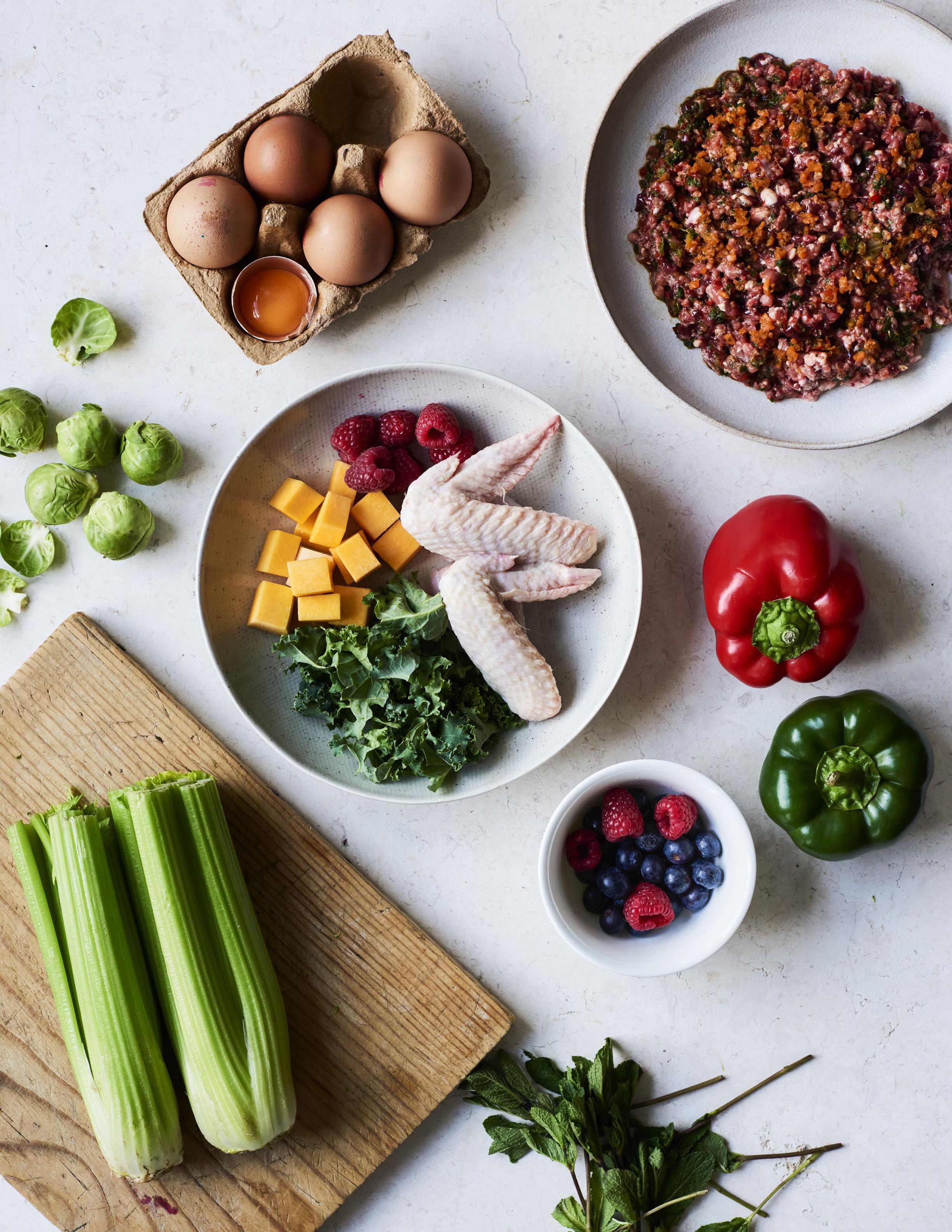
Chapter 4 Recipes
How Often Should I Feed Each Recipe to my Dog?
The recipes I’ve provided in this nutritional guide will give you the confidence you need to start feeding your dog a whole foods diet. This section is designed to take all the difficulty and confusion out of the feeding process, giving you the correct balance of food groups and nutrient sources in each meal. If you combine the recipes in this guide with the easyto-follow feeding calendar, you’re sure to have the healthiest pooch in town.
Each dog is different, and variation is healthy, so I encourage experimentation to find out what works best for your dog.
The recipes are split into standard and complete recipes. Standard recipes are for everyday feeding, whereas complete recipes are more nutritionally dense and should only be fed to your dog occasionally.

help@thedognutritionist.com
Types of Recipes per Week
Complete Superfood Recipes
Minimum of 2 days per week; Maximum of 5 days per week
Standard Everyday Recipes
Minimum of 3 days per week; Maximum of 5 days per week
Quick Recipes
Maximum of 2 meals per week
Breakfast Recipe
Maximum of 3 meals per week
This is just a guide, not a specific breakdown of how many meals you must feed your dog.
All you need to do is give your dog at least a couple of complete meals a week, to ensure they have all the nutrients they need and provide them with the right quantity of food to ensure they don’t get too skinny or too chubby. Simple.
www.thedognutritionist.com
24
Everyday Leftovers Quick Superfood Breakfast
Ingredient 500g 1kg 5kg 10kg
Meat (Dependent on bone quantity) 300 - 350g 600 - 700g 3000 - 3500g 6000 - 7000g
Organ Meat 50g 100g 500g 1000g
Egg + Ground Eggshell 1 + 1 2 + 2 10 + 10 20 + 20
Vegetables* 30g 60g 300g 600g Fruits* 20g 40g 200g 400g
Superdog Meal Topper 0.5 tbsp 1 tbsp 5 tbsp 10 tbsp
Extra Virgin Olive Oil/ MCT Oil 0.5 tbsp 1 tbsp 5 tbsp 10 tbsp
*See list of forbidden food on p.8*
Raw Everday Recipe
About the Recipe
A simple and healthy whole food recipe, it’s not complete, but that doesn’t stop it being super healthy. Use different variations of meats/ bones/ fruits and veggies to see what works best for your dog. You can add 200g of cooked sweet potato or white rice per 1kg of food to bolster the recipe.

Raw Meaty Bones
Raw bones are simply the healthiest. Using them is a vital part of looking after your dog, they are the toothbrush, the treat they love the most and really cost effective. Check Cam’s Tips for more info.
1 2 3 4 5

The Method Cam’s Tip
Chop up all the meat & organ meat finely. Use a food processor or mincer if you have one.
Grate/ chop up finely, all the non-meats veggies, fruits, seeds, into small bits not a juice.
Mix the meat and veggies and fruit. Also add the raw egg and eggshell which you’ll need to grind up finely, the meal topper, MCT and Fish oils, seeds. Mix thoroughly.
Portion our the small raw bones, it’s 1 or 2 small bones per 1kg of food. (Chicken Feet, Wings, Legs or Duck Necks, Wings or Lamb Cutlets or Pork Ribs) MUST BE RAW.
Mix it all up and then portion out. Whack it in the fridge or freezer. Once in the fridge or out of the freezer and defrosted in the fridge, it will last up to a week.
For small dogs, use raw chicken feet or wings, duck necks or small lamb cutlets.
For larger dogs, use raw chicken legs, duck necks, pork ribs or lamb cutlets.
www.thedognutritionist.com help@thedognutritionist.com

25
Extra Virgin Olive Oil/ MCT Oil 0.5 tbsp 1 tbsp 5 tbsp 10 tbsp
*See list of forbidden food on p.8*
Cooked Everyday Recipe
About the Recipe
A simple and healthy whole food recipe, it’s not complete, but that doesn’t stop it being super healthy. Use different variations of meats/ fruits and veggies to see what works best for your dog.
More Information
Occasionally you can add 200g of cooked sweet potato or white rice per 1kg of food to bolster the recipe. This reduces the meat consumpiton of the dog without compromising on the healthiness of the diet.
1 2 3 4 5
The Method
(If using Mince & Organ) – Put a cooking oil (not MCT or Fish Oil); hemp, coconut, olive oil, in a cooking pot 1tsp per 1kg of food and mix in the mince and chopped organ meat. Don’t brown it, just cook it.
OR (If using Meat chunks & Organ) – Chop into small chunks and boil it.
Grate (preferably) or chop up the veggies and fruit into small bits, do not a juice
Mix the cooked mince/ meat/fish/ organ with veggies and fruit in a mixing bowl.
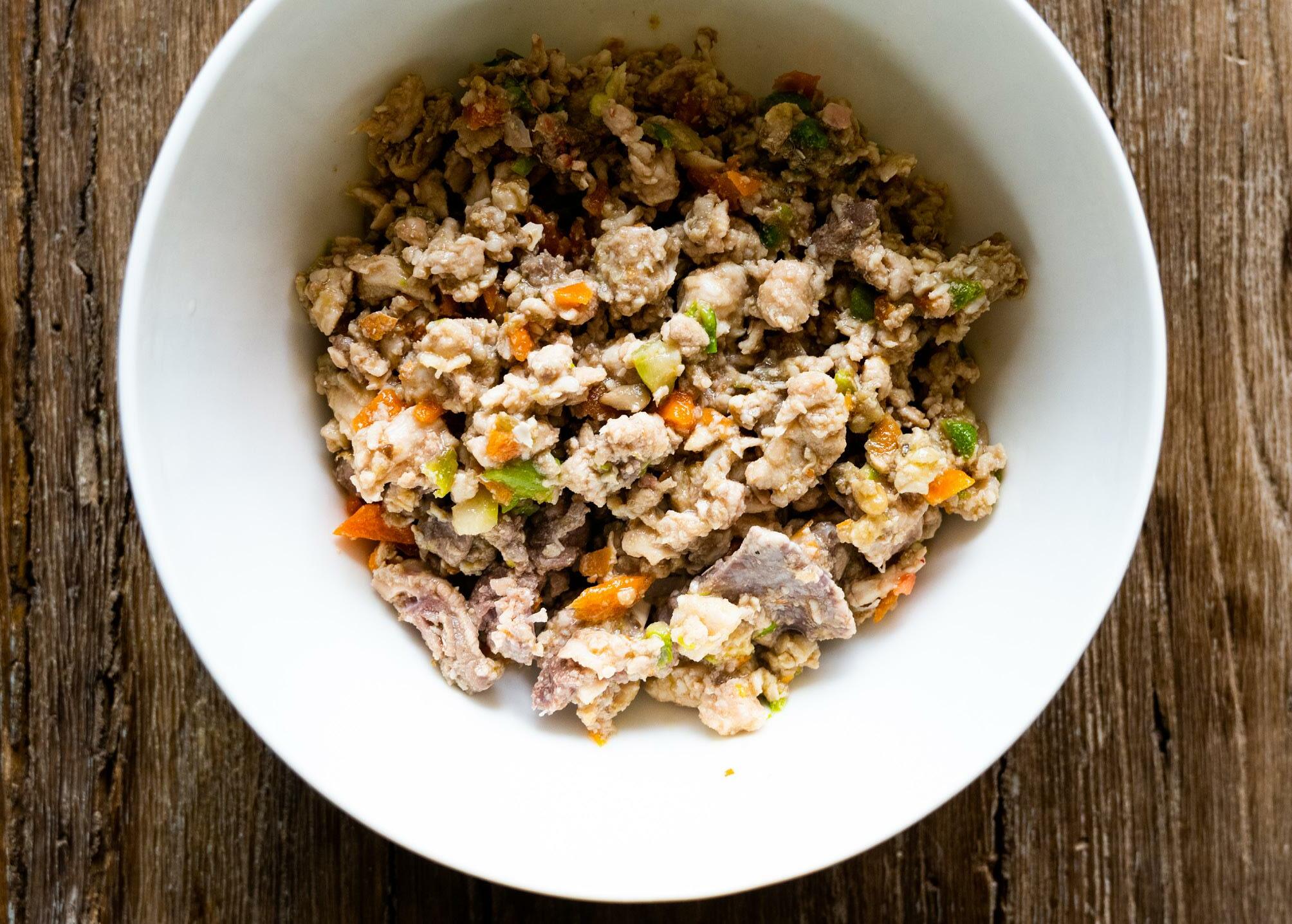
Add the raw egg, eggshell which you’ll need to grind up finely, meal topper, MCT or Olive oil.
Mix it all up and then portion out. Whack it in the fridge or freezer. Once in the fridge or out of the freezer and defrosted in the fridge, it will last up to a week.
Cam’s Tip

help@thedognutritionist.com
Don’t burn the meat! Other than that, you can cook it anyway you like. Slow cooking meat is less preferable, because exposure to heat reduces the nutrient density of the meal.
www.thedognutritionist.com

Ingredient 500g 1kg 5kg 10kg
Meat (Dependent on bone quantity) 350g 700g 3500g 7000g
Organ Meat 50g 100g 500g 1000g Egg + Ground Eggshell 1 + 1 2 + 2 10 + 10 20 + 20
Vegetables* 30g 60g 300g 600g Fruits* 20g 40g 200g 400g
Superdog Meal Topper 0.5 tbsp 1 tbsp 5 tbsp 10 tbsp
26
Ingredient 500g 1kg 5kg 10kg
Meat (See Cam’s Tip) 300 - 350g 600 - 700g 3000 - 3500g 6000 - 7000g
Organ Meat 50g 100g 500g 1000g
Liver 25g 50g 250g 500g
Raw Bone 0.5 - 1 bone 1 - 2 bones 5 - 10 bones 10 - 20 bones
Carrot 25g 50g 250g 500g
Broccoli 20g 40g 200g 400g
Berries 10g 20g 100g 200g
Superdog Meal Topper 0.5 tbsp 1 tbsp 5 tbsp 10 tbsp
Extra Virgin Olive 0.5 tbsp 1 tbsp 5 tbsp 10 tbsp
Oil/ MCT Oil 0.5 tbsp 1 tbsp 5 tbsp 10 tbsp
Fish Oil 1 tbsp 2tbsp 10 tbsp 20 tbsp
*See list of forbidden food on p.8*
Complete Raw Recipe
About the Recipe
This is a well-balanced and healthy recipe containing meat, organ meat, fruits, and vegetables with some healthy fats. The difference between this recipe and Standard Recipe Two is that you need to provide more fat in this recipe, as poultry is leaner.

Raw Meaty Bones
Raw bones are simply the healthiest. Using them is a vital part of looking after your dog, they are the toothbrush, the treat they love the most and really cost effective. Check Cam’s Tips for more info.
help@thedognutritionist.com
1 2 3 4 5
The Method
Chop up all the meat & organ meat finely. Use a food processor or mincer if you have one.
Grate/ chop up finely, all the non-meats veggies, fruits, seeds, into small bits not a juice.
Mix the meat and veggies and fruit. Also add the raw egg and eggshell which you’ll need to grind up finely, the meal topper, MCT and Fish oils, seeds. Mix thoroughly.

Portion our the small raw bones, it’s 1 or 2 small bones per 1kg of food. (Chicken Feet, Wings, Legs or Duck Necks, Wings or Lamb Cutlets or Pork Ribs) MUST BE RAW.
Mix it all up and then portion out. Whack it in the fridge or freezer. Once in the fridge or out of the freezer and defrosted in the fridge, it will last up to a week.
Cam’s Tip

If you choose to use 2 bones per 1kg, make sure you use the lower quantity of meat recommended in the recipe. Pick a raw bone that is appropriate to the size of your dog.
www.thedognutritionist.com
27
Ingredient 500g 1kg 5kg 10kg
Meat (Dependent 300 - 350g 600 - 700g 3000 - 3500g 6000 - 7000g
Organ Meat 50g 100g 500g 1000g
Liver 25g 50g 250g 500g
Raw Bone 0.5 - 1 bone 1 - 2 bones 5 - 10 bones 10 - 20 bones
Carrot 25g 50g 250g 500g
Broccoli 20g 40g 200g 400g
Berries 10g 20g 100g 200g
Superdog Meal Topper 0.5 tbsp 1 tbsp 5 tbsp 10 tbsp
Extra Virgin Olive 0.5 tbsp 1 tbsp 5 tbsp 10 tbsp
Oil/ MCT Oil 0.5 tbsp 1 tbsp 5 tbsp 10 tbsp
Fish Oil 1 tbsp 2tbsp 10 tbsp 20 tbsp
*See list of forbidden food on p.8*
Complete Cooked Recipe
About the Recipe
This is a well-balanced and healthy recipe containing meat, organ meat, fruits, and vegetables with some healthy fats. The difference between this recipe and Standard Recipe Two is that you need to provide more fat in this recipe, as poultry is leaner.

More Information
Occasionally you can add 200g of cooked sweet potato or white rice per 1kg of food to bolster the recipe. This reduces the meat consumpiton of the dog without compromising on the healthiness of the diet.

1 2 3 4 5
The Method
Chop up all the meat & organ meat finely. Use a food processor or mincer if you have one.
Grate/ chop up finely, all the non-meats veggies, fruits, seeds, into small bits not a juice.
Mix the meat and veggies and fruit. Also add the raw egg and eggshell which you’ll need to grind up finely, the meal topper, MCT and Fish oils, seeds. Mix thoroughly.
Portion our the small raw bones, it’s 1 or 2 small bones per 1kg of food. (Chicken Feet, Wings, Legs or Duck Necks, Wings or Lamb Cutlets or Pork Ribs) MUST BE RAW.
Mix it all up and then portion out. Whack it in the fridge or freezer. Once in the fridge or out of the freezer and defrosted in the fridge, it will last up to a week.
Cam’s Tip

help@thedognutritionist.com
If you choose to use 2 bones per 1kg, make sure you use the lower quantity of meat recommended in the recipe. Pick a raw bone that is appropriate to the size of your dog.
www.thedognutritionist.com
28
Ingredient 200g 500g 750g 1kg 1.5kg

Meat 90g 300g 475g 650g 950g
Ground Eggshell 0.25 EggShells 0.5 EggShells 0.7 EggShells 1 Eggshell 1.5 Eggshells
Egg 1 Egg 1 Egg 1 Egg 1 Egg 2 Eggs
Vegetables / Fruits* 20g 50g 75g 100g 150g
Cooked Rice/ Sweet Potato 40g 100g 150g 100g 300g
Superdog Meal Topper 0.5 tbsp 1 tbsp 1 tbsp 1.5 tbsp 1.5 tbsp
Extra Virgin Olive Oil/ MCT Oil 1 tbsp 1 tbsp 1.5 tbsp 2 tbsp 2 tbsp
Cooked Quick Meal
About the Recipe
This recipe is for when you don’t have any pre-made food in the house and you just can’t face the organ meat. It’s healthy, so don’t be afraid to use this when you need to, up to twice a week.
More Information
This is how I make my dog a meal out of my leftovers as a treat. Make sure to avoid any onion in your food, and a little garlic is fine. Don’t let your dog get used to eating your meals because they won’t want to stop!
This recipe can be substituted for the Standard Recipes twice a week.
help@thedognutritionist.com
1 2 3 4 5
The Method
*See list of forbidden food on p.8*
Cook meat. Don’t burn it. Chop into small chunks if it’s not mince.
Grate (preferably) or chop up the veggies and fruit into small bits, do not a juice.
Mix the cooked meat with the cooked rice or sweet potato and the veggies or fruit in a mixing bowl.
Add the raw egg, eggshell which you’ll need to grind up finely, meal topper, MCT or Olive oil.
Mix it all up and then portion out.
Cam’s Tip

If you don’t grate the veggies small enough, your dog will avoid them. Remember, they are scavenging opportunistic carnivores!
www.thedognutritionist.com

29
Ingredient 100g 200g 300g 400g 500g Fish (Raw) (Avoid cooked bones) 50g 100g 150g 200g 250g Honey 1/2 tsp 1/2 tsp 1 tsp 1 tsp 1 t/sp Organic Eggs 0 Egg 1 Egg 1 Egg 2 Eggs 2 Eggs
Berries * 20g 30g 40g 50g 60g Natural Yoghurt/ Lactose Free 30g 40g 60g 70g 80 g
*See list of forbidden food on p.8*
Breakfast Recipe
About the Recipe
This is a great probiotic breakfast for gut health and immunity. It shouldn’t be fed to your dog daily, but twice a week is ideal. Sardines in water, salmon or any white fish will work well, but remember, no cooked bones!
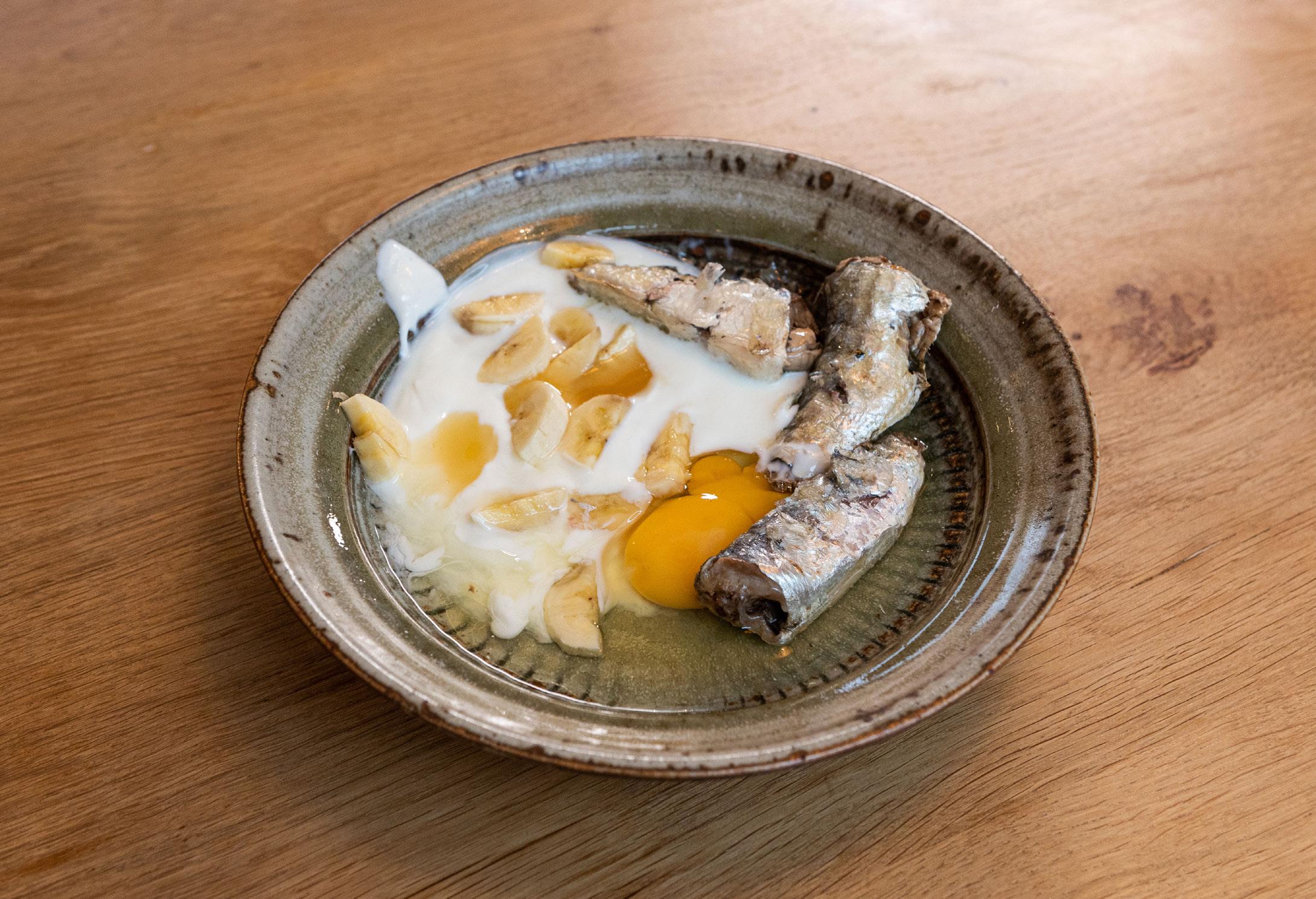
More Information
The breakfast recipe should be your dog’s first meal of the day to ensure the probiotic yoghurt is consumed on an empty stomach. This gives the good bacteria in the yoghurt the best chance of surviving in your dog’s digestive system.
1 2 3 4 5

The Method
Choose a fish source. Sardines in water or raw salmon (think sushi)
Chop the fruit into small bits, do not a juice.
Put the yoghurt in the bowl, add the fruit and put the honey on top.
Add the raw egg, no need to mix it in,. Don’t mix it all up.
Move to a lactose free yoghurt if your dog’s stools are overly effected by this meal. Cam’s Tip
www.thedognutritionist.com help@thedognutritionist.com

30

Making and Storing Your Dog Food
Chapter 6
1 2 3 4

How to Make Raw Dog Food
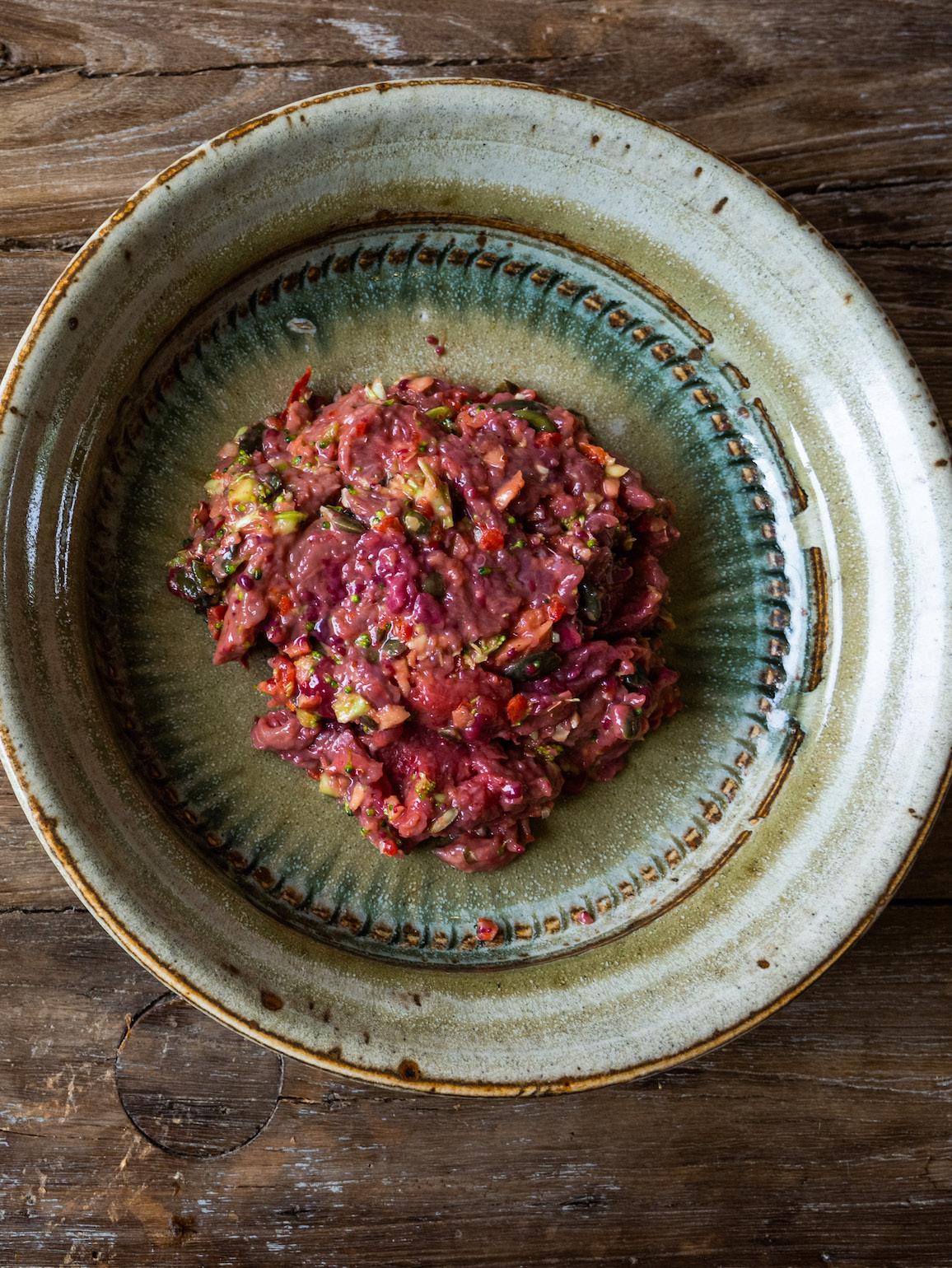
Chop up the meat finely, using a food processor or mincer if you have one, and then mix it with the oil in the pot. Put it on a medium heat for five minutes.
Blend all the other ingredients into small bits – not a liquid!
Mix it together, portion it out and put it in the fridge or freezer. Once in the fridge or out of the freezer and defrosted in the fridge, it will last up to a week.
Feed 1 or 2 raw meaty bones per 1kg of food.

32
www.thedognutritionist.com help@thedognutritionist.com
How to Make Cooked Dog Food
Put one tablespoon of cooking oil (either hemp, coconut, or olive oil) in a pot for every kilogram of food you want to make.

Chop up all the meat finely, using a food processor or mincer if you have one, and then mix it with the oil in the pot. Put it on a medium heat for five minutes.
Mix it together, portion it out and put it in the fridge or freezer. Once in the fridge or out of the freezer and defrosted in the fridge, it will last up to a week.
If you’re using fish as the main meat, don’t cook it in the pot. Instead, the fish should be baked separately to preserve the Omega-3 fats. Put the boneless fillets on a tray and cook them for 15 minutes at 180 degrees Celsius.
Blend the mushrooms and/or vegetables into small bits – not a liquid! Mix into the pot with the meat for ten minutes.

Turn off the heat and add the egg, eggshell (which you’ll need to grind up), fruit, seeds, and honey.
Mix it together, portion it out and put it in the fridge or freezer. Once in the fridge or out of the freezer and defrosted in the fridge, it will last up to a week.

1 2 3 4 5 6 7 33
www.thedognutritionist.com help@thedognutritionist.com
Chapter 7
Sourcing the Right Food

Meat
Not all meat is made equal. Whilst supermarket meat is likely better than the meat found in most shop-bought dog food, some of the cheaper options may be sourced from farms that prioritize low prices over good living standards for their animals.
Often, at these types of farms, space is at a premium and the population density of the animals is dangerously high, making them a hotbed for diseases. To compensate, farmers treat their animals with antibiotics that will remain in the meat that you buy.
Although it may not be financially viable for everyone, the best option from supermarkets is organic meat. If you’d like a cheaper alternative that’s still great quality, we suggest cutting out the middleman and going to our recommended suppliers.
Over the last few years, many farms and businesses have set up services that ship raw, refrigerated, ethically sourced, organic meats. See page X for our suggestions and discount codes.
help@thedognutritionist.com
Fruit and Vegetables
Much like the range of quality available in meats, there is a sizeable difference between the best fruit and vegetables and the worst. Tragically, the rate at which pesticides are used in farming practices increases year on year as the demand for food grows globally, businesses reach for better profit margins, and pests become resistant to their effects. Between 1990 and 2017, the rate of pesticides used globally has increased by 74%.
The increased presence of pesticides in our fruit and vegetables have been linked to health issues such as ADHD, chronic inflammatory illnesses, and even cancer. Many allergies and intolerances in dogs and humans alike could be caused by harmful pesticides.
Buying organically grown fruit and vegetables is the best way to reduce yours and your dog’s pesticide intake. We know how difficult and expensive organic foods can be, but there are more and more farm-to-table services that make sourcing healthy foods more transparent and affordable.

www.thedognutritionist.com

35
Food Transition Guide

Chapter 8
Food Transition Guide
You’ll need to help your dog with the transition when they’re trying a new meal for the first time. If you keep up a good amount of variation in their diet, you’ll only have to do this once.
As an owner, you’re the one who is best placed to see how your dog is reacting to the new food. If they get explosive diarrhea, a rash, or itch excessively, you’ll need to carry out an allergy plan to determine a diet that works for your dog. Use the discount code X and this link X.
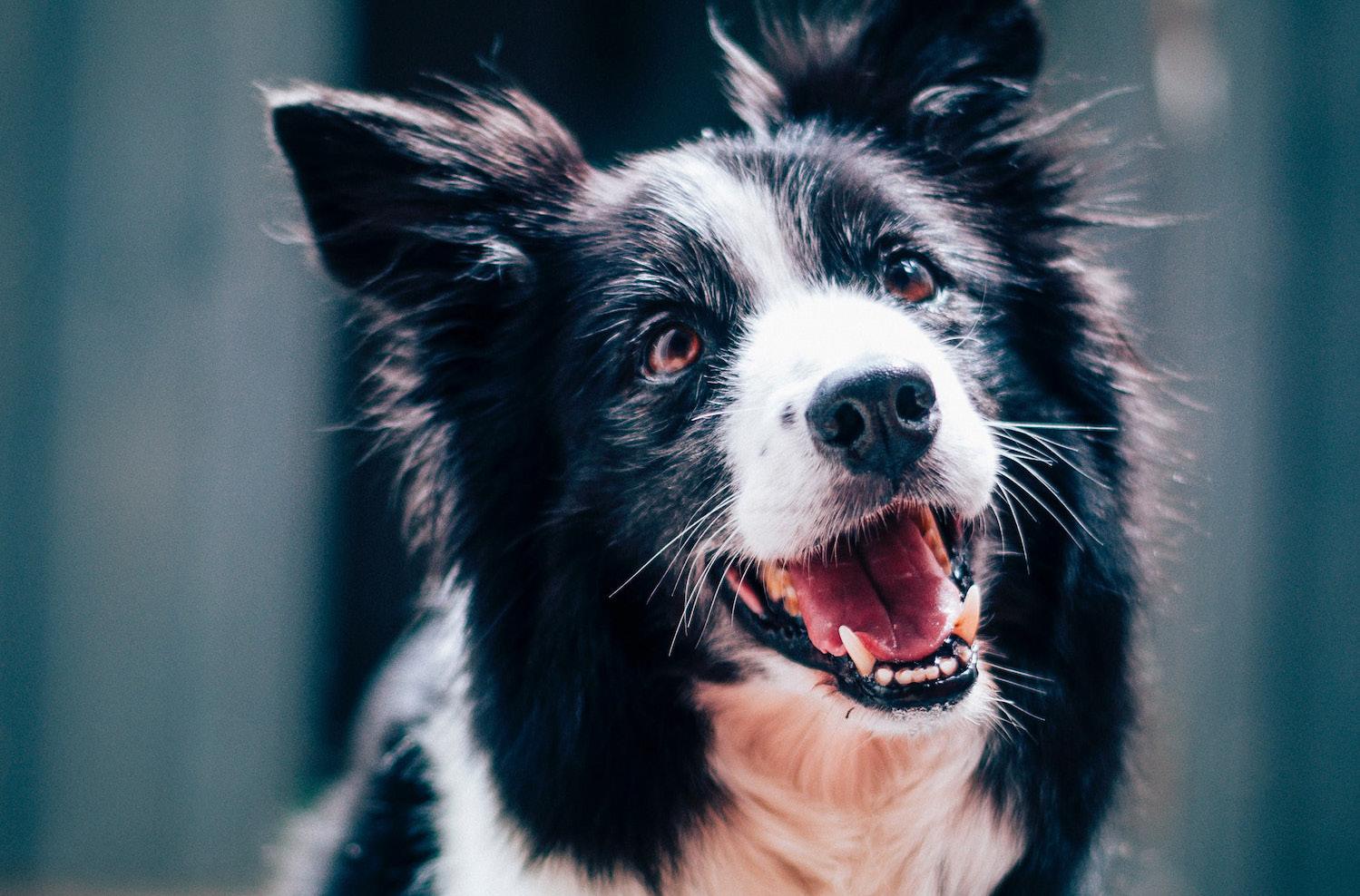
Below is a guide that shows you how to transition your dog to their new food. Four days’ worth of food will cover you for a weeklong transition.
Transition Time New Food Old Food
Day 1–2 20% 80% Day 3–4 50% 50% Day 5–6 80% 20% Day 7 100% 0%


Remember that this table is only a guide; if your dog has a weaker stomach than most, the transition should be spread across a longer period. Please check your dog’s poop, these will indicate whether you’re switching foods too quickly.
help@thedognutritionist.com
Dealing with a Fussy Dog
You mustn’t replace these meals unless your dog has had a bad reaction to the food. As soon as your dog understands there’s another food option, they’re going to make your life a misery. Trust me, they’re too smart and know your weakness all too well. Those puppy dog eyes get us all…
Our meals are super healthy, tasty, and necessary to keep your dog healthy. If you replace the meal, you’re not doing them any favours.
If your dog refuses food for over three days or if they’re consistently losing weight, please get in touch.
www.thedognutritionist.com

37
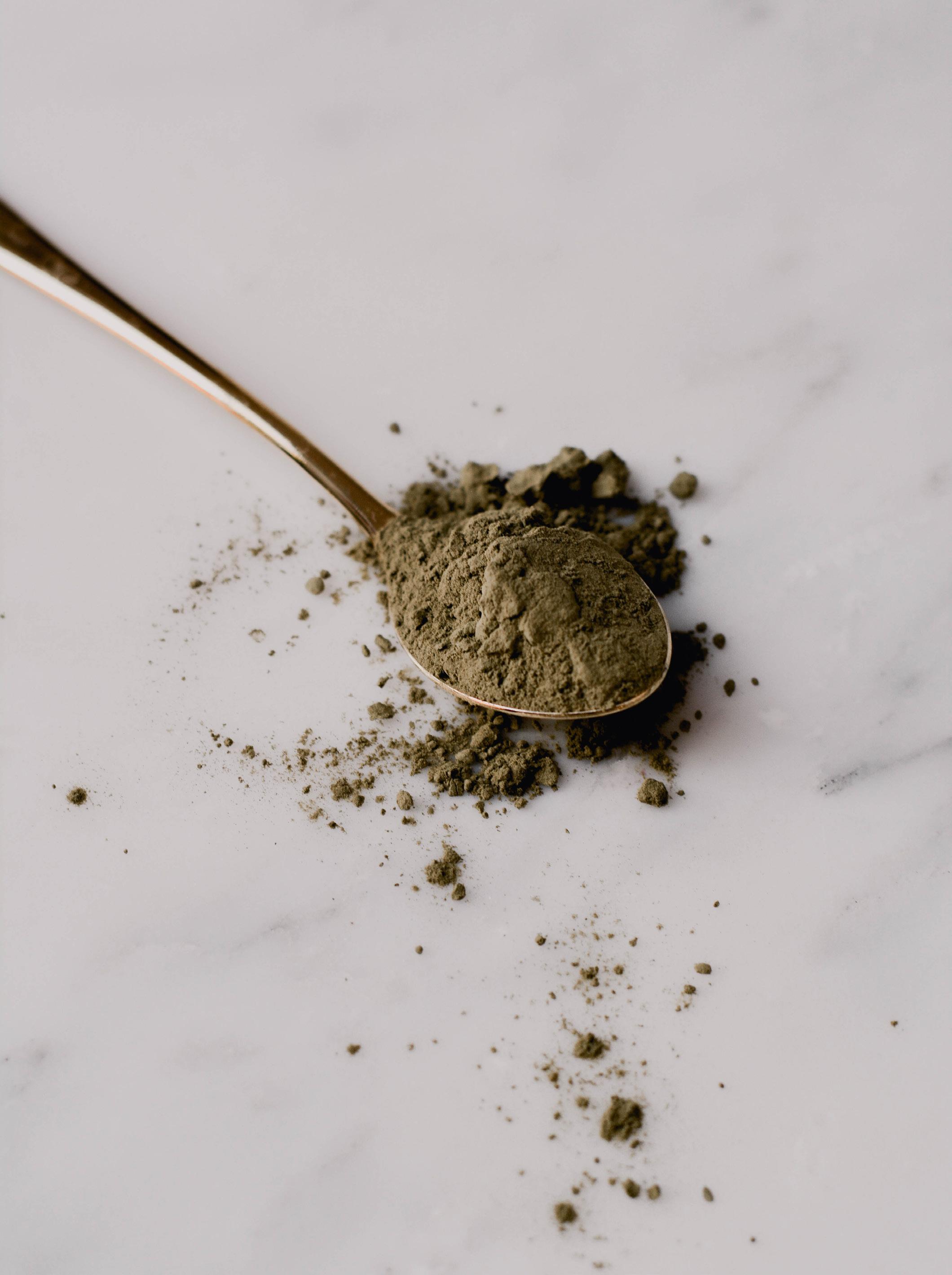
Supplementing your Dog’s Food
Chapter 9
Supplements
The canine and human health industries generate billions of pounds each year selling health supplements. The two main issues in the supplements industry are a distinct lack of rigorous scientific data to back up claims and the unchecked interpretation of any scientific literature by bloggers, vets, and owners alike. This leaves consumers unsure of what works and what doesn’t. I always tell dog owners that supplements will never change a dog’s life alone. It’s a holistic approach to diet and lifestyle that will affect 99% of their health; supplements are just the cherry on top that can make an extra difference. This 1%, however, can have a real impact if the supplement is premium and functional.
In this chapter, we’re going to look at a variety of supplements, why your dog would need them, and which ones will help your dog the most. Early stage puppies do not need supplements.
Omega-3 Fish Oil Joints; Skin; Heart health; Natural anti-inflammatory Effective. However, if your dog can eat fish, don’t bother wasting your money. Instead, give them a raw sardine or mackerel two or three times a week. If not, look for a good quality fish oil because cheaper oils can contain high amounts of toxins. The worse the quality of the oil, the more synthesized and potentially rancid the oil will be.
Multivitamins/ BARF Mixes A variety of nutrients/ functional ingredients. Effective My multivitamin/natural de-wormer, smart BARF and anti-forte BARF mix is the best, obviously. It’s a dual function natural de-wormer multivitamin that also contains immune boosting Reishi mushrooms.

Glucosamine Joints; Heart health Potentially Beneficial.
A meta-analysis on the efficacy of glucosamine for joint health showed it to be effective in high doses. However, if your dog eats raw, meaty bones, you won’t need this supplement, as the cartilage will provide your dog with glucosamine from a natural source.
Probiotics Digestive health Potentially Beneficial.
The issue with probiotics is that they need to survive the gut, and the low pH of your dog’s stomach (high acidity) can destroy a good proportion of the probiotics. They can have benefits, but only in higher quantities than is generally recommended in most other supplements. I give my dog kefir, which is a more natural and much cheaper source of probiotic. Ideally, feeding your dog a diet of fresh food with a wide variety of ingredients is how you should rebalance your dog’s gut bacteria to a healthy level.
Supplement Reason for use Efficacy
39
www.thedognutritionist.com help@thedognutritionist.com
Chapter 10
Spotting Common Health Issues
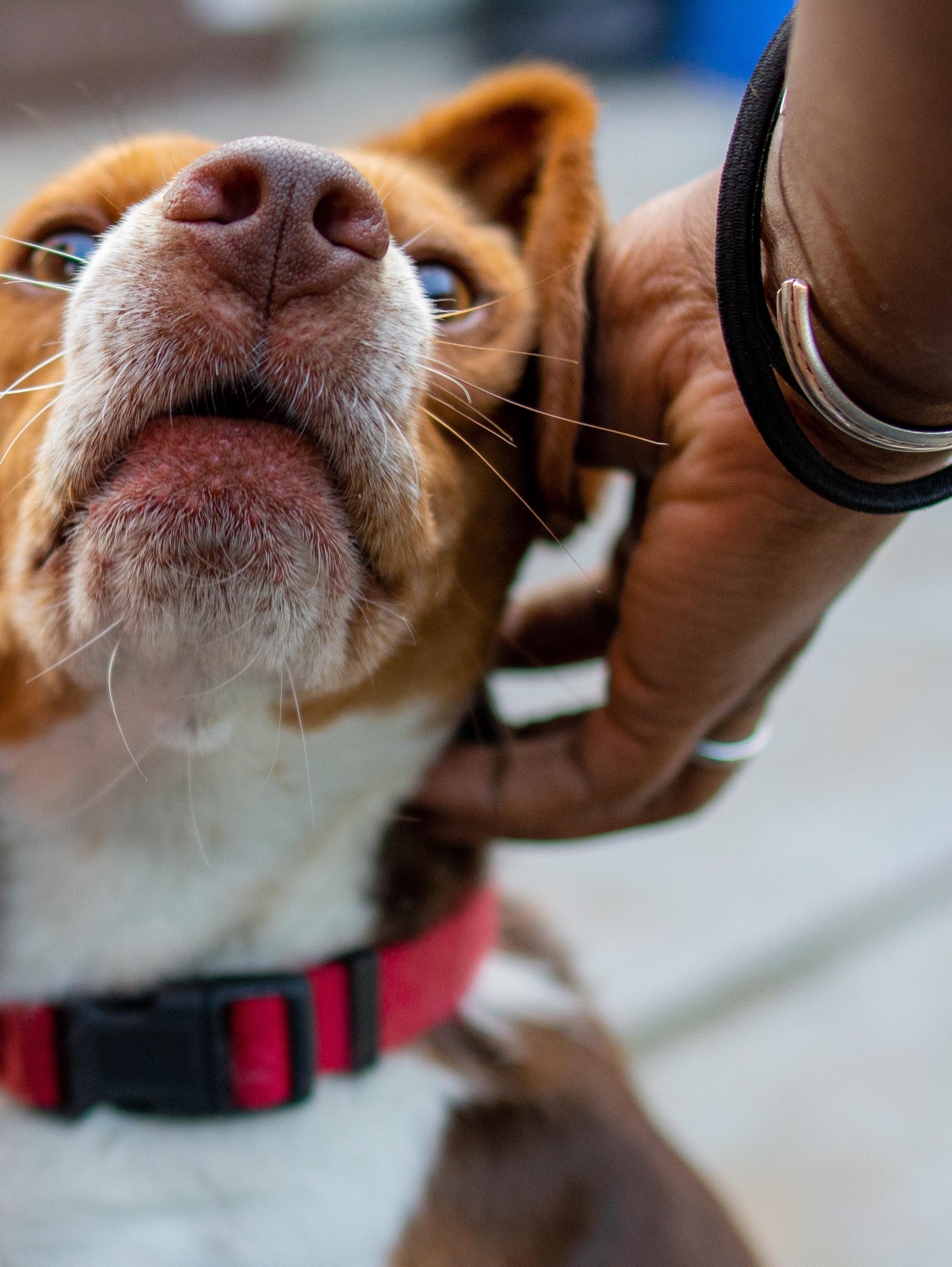
Many health issues commonly found in dogs can be prevented by feeding them a healthy and natural diet like the one suggested in this guide. Unfortunately, dogs can be particularly susceptible to certain issues because of genetic defects. However, even if your dog has a health problem, we can alter their diet to ensure they have the best chance of recovery. Below is a table with some of the common health issues that modern dogs face, the early signs to look out for, and discount codes to my bespoke feeding plans that will give your dog the best chance of recovery.
If you spot any of these symptoms in your dog, it’s always advisable to consult your vet before changing their diet.
Health Problem Symptoms Discount Code & Link
Allergy Itching, Rashes, Diarrhoea, Vomiting, Low MCHC
Digestion Itching, Diarrhoea, Vomiting, Acid Reflux, Pancreatitis
Kidney Lethargy, Loss of appetite, Raised creatinine levels in blood, Proteinuria (protein in urine, Abnormalities to phosphorus, calcium, potassium, and sodium levels in blood
Liver Lethargy, Loss of appetite, Increased liver enzymes, Increased bile acids, High ALP, Low platelets, High creatinine
TDNALL30
TDNDIG30
Pancreatitis Vomiting, Lack of appetite, Excessive bowing –your dog stretching into a prayer position , Diarrhoea, Weight loss
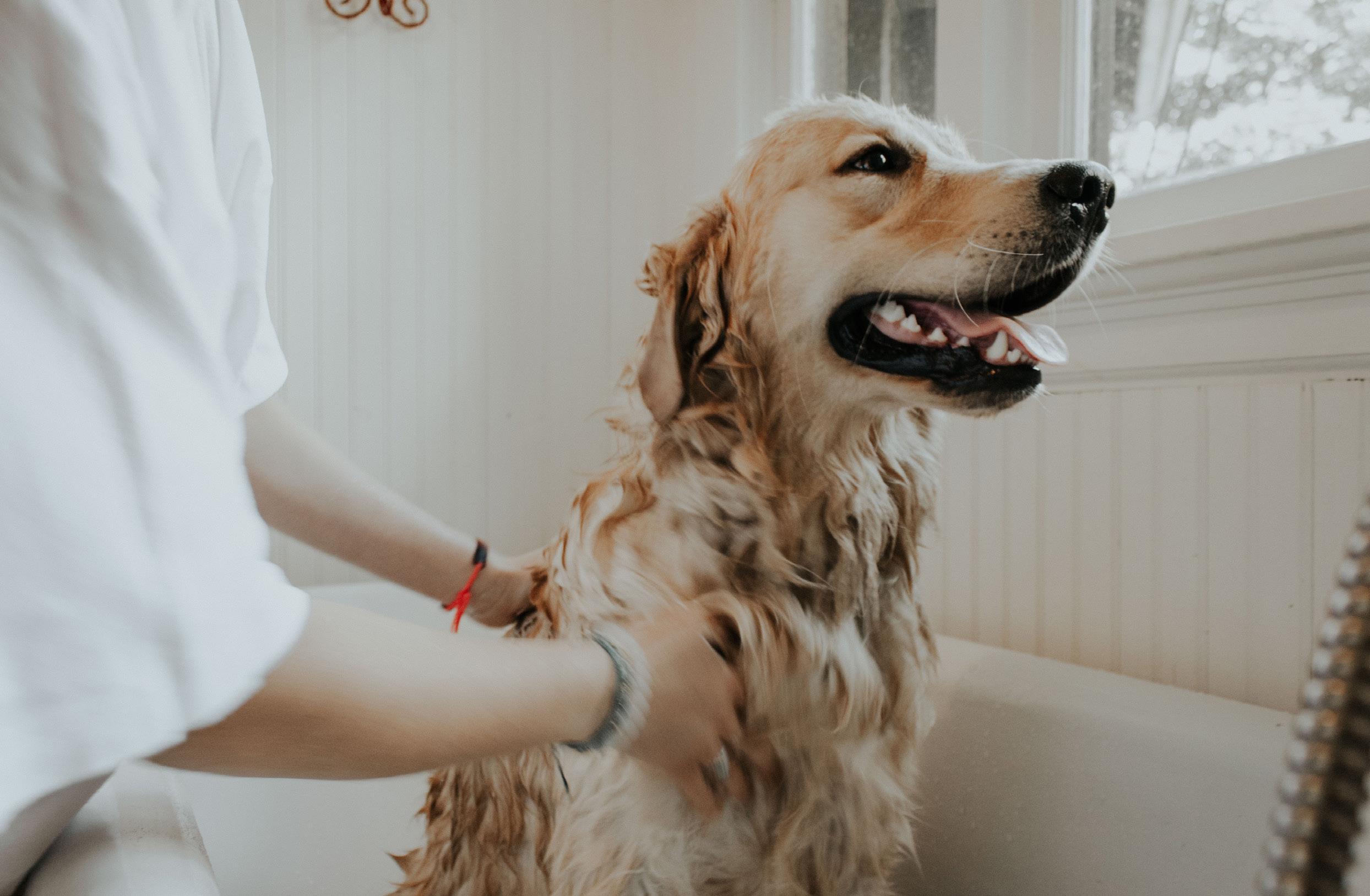
TDNKID30
help@thedognutritionist.com
www.thedognutritionist.com

TDNLIV30
TDNPAN30
41
Separate hard lumps, like nuts (hard to pass)
The Answer is in the Poo
Poo is made up of waste, which may include undigested food, such as fibre that can’t be digested, bacteria and salts. It’s important that you get in touch if you think your dog’s poop is consistently outside of the healthy range, so we can implement a specific diet that works for them.
Sausage-shaped but lumpy
Like a sausage but with cracks on its surface like a sausage or snake, smooth and soft
Soft blobs with clear-cut edges (passed easily)
Understanding the Bristol Stool Scale
The Bristol Stool Scale, despite being indicator of human poo, is a great tool to reference how healthy your dog’s digestion is, as nearly all health issues will affect your dog’s poo. The Bristol Stool Scale depicts seven types of stool, ranging from the hard and difficult to pass to diarrhoea.
Type 1: Separate hard lumps that are often difficult to pass and are sometimes described as resembling nuts in shape and size.
Type 2: A lumpy sausage shape that can also be difficult to pass.
Type 3: Sausage-shaped, but with several cracks running across the surface.
Type 4: A smooth long snake shape with no cracks or lumps.
Type 5: A series of soft blobs with well-defined edges.
Watery, no solid pieces, entirely liquid
Type 6: Mushy consistency with ragged edges, looking more like a pile than clear separate stools.
Type 7: Liquid in form, containing no solid pieces.

www.thedognutritionist.com help@thedognutritionist.com

1 2 3
4 5 6 7
42
•
If Bowel Movements Could Talk
Signs of Healthy Digestion
If your dog’s poops are Bristol Type 3 or 4, that’s the sweet spot.
If they’re also large and very smelly, beware of the kibble.
What Could Constipation Indicate?
Bristol Type 1 or 2 are indicative of constipation. This can be treated by increasing the fibre in your dog’s diet and decreasing the calcium.
Constipation can be an indicator of the following conditions:
• Poor lifestyle choices, such as a diet lacking in nutrients or not drinking enough water.
Diabetes
• Thyroid conditions. Low levels of thyroid hormone can often lead to chronic constipation.
• Pregnancy. An increase in the hormone progesterone during pregnancy relaxes the muscles in the lining of the digestive tract, leading to more sluggish movements of the bowels and constipation.
• Bowel obstruction, which is when a blockage inside the colon prevents waste from passing through the digestive tract.
What Could Diarrhea Indicate
Bristol Type 5 suggests that a lack of fibre is the main problem, whereas Types 6 and 7 suggest an inflammatory issue.
What Does the Colour of Your Dog’s Poo Mean
Dark brown: This is a healthy colour caused by bilirubin, a pigment released by the breakdown of old red blood cells.
Black . Certain foods and medications can cause black stools, but a black, sticky, tar-like appearance could indicate gastrointestinal bleeding.
White - This could be due to too much calcium; however, a lack of bile caused by issues with your dog’s gallbladder, liver, or pancreas can cause also pale grey or white poop.
Green: Plant-based foods can cause poop to turn green. On the other hand, green poop could also be due to too much bile or too little bilirubin.
Red: Certain red foods like cooked beetroot can cause your poop to turn red, although red-colored poop can also be the result of intestinal bleeding.
Orange: Food rich in beta-carotene, such as carrots or sweet potato, can turn stools orange. Blocked bile ducts and certain medications can also cause orange poop.
Yellow: Yellow or greasy-looking poop may contain too much fat, either due to malabsorption or a lack of certain enzymes, including bile.
Pooping Frequency
Ideally twice to three times a day. Anymore, the diet is wrong. Odor
Poo should smell bad, as it’s made up of all the stuff your body needs to get rid of, including bacteria that give off strong smelly gases. However, extremely foul-smelling stools could indicate inflammatory bowel disease.
www.thedognutritionist.com

43
help@thedognutritionist.com

Your
Chapter 11
New Life Together
Chapter 11
My approach to dog ownership is often called the ‘live and learn’ technique. Developed over millions of years of existence, it’s about acquiring new information, applying it to your life, and seeing the benefits. Don’t stop the process now; if you keep going, you’ll keep seeing the benefits. I look forward to sharing more information with you and helping you to live the best life possible with your dog.
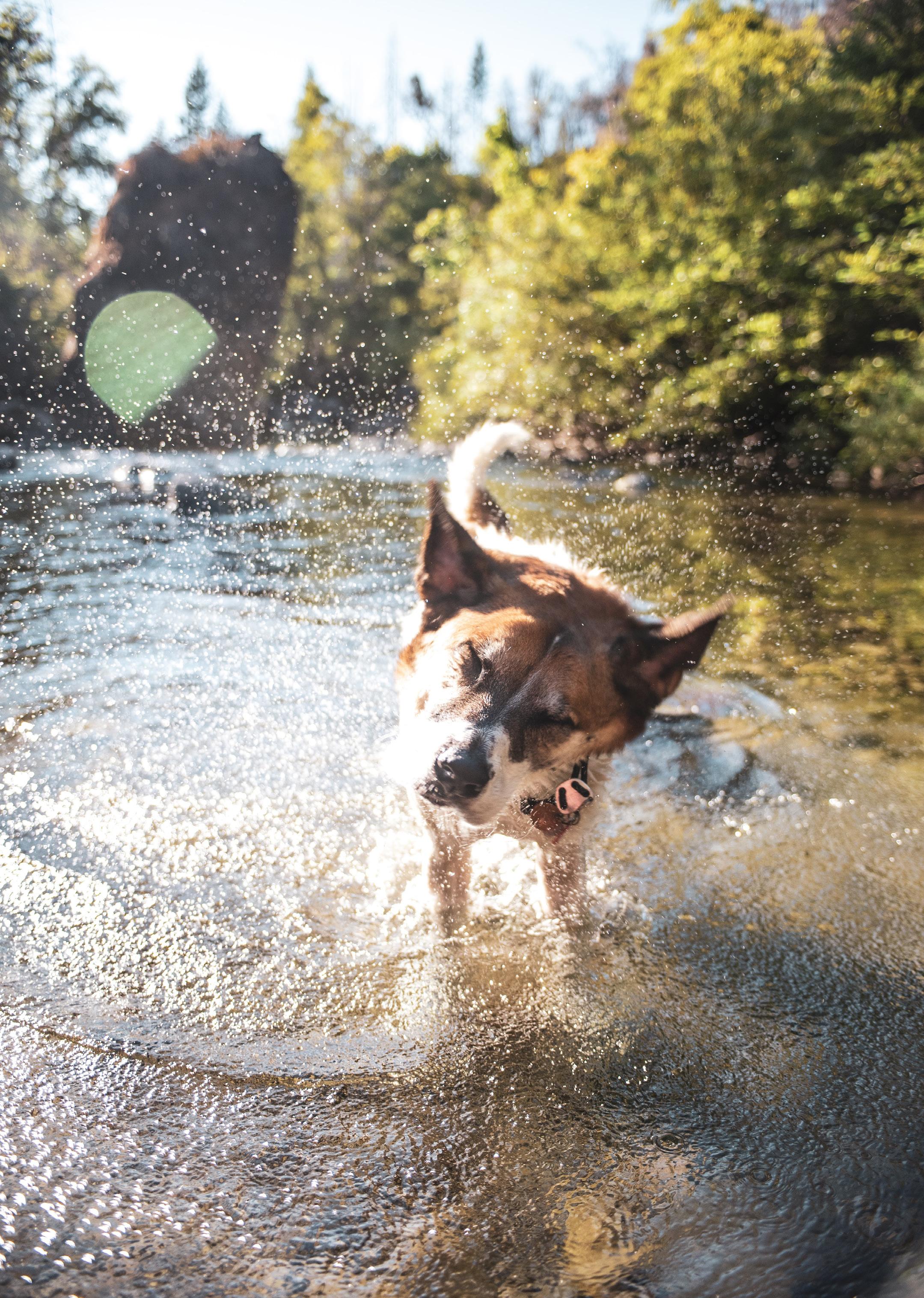
help@thedognutritionist.com
www.thedognutritionist.com

45
Dog ownership is a journey you take with your dog and you should constantly be seeing the benefits.
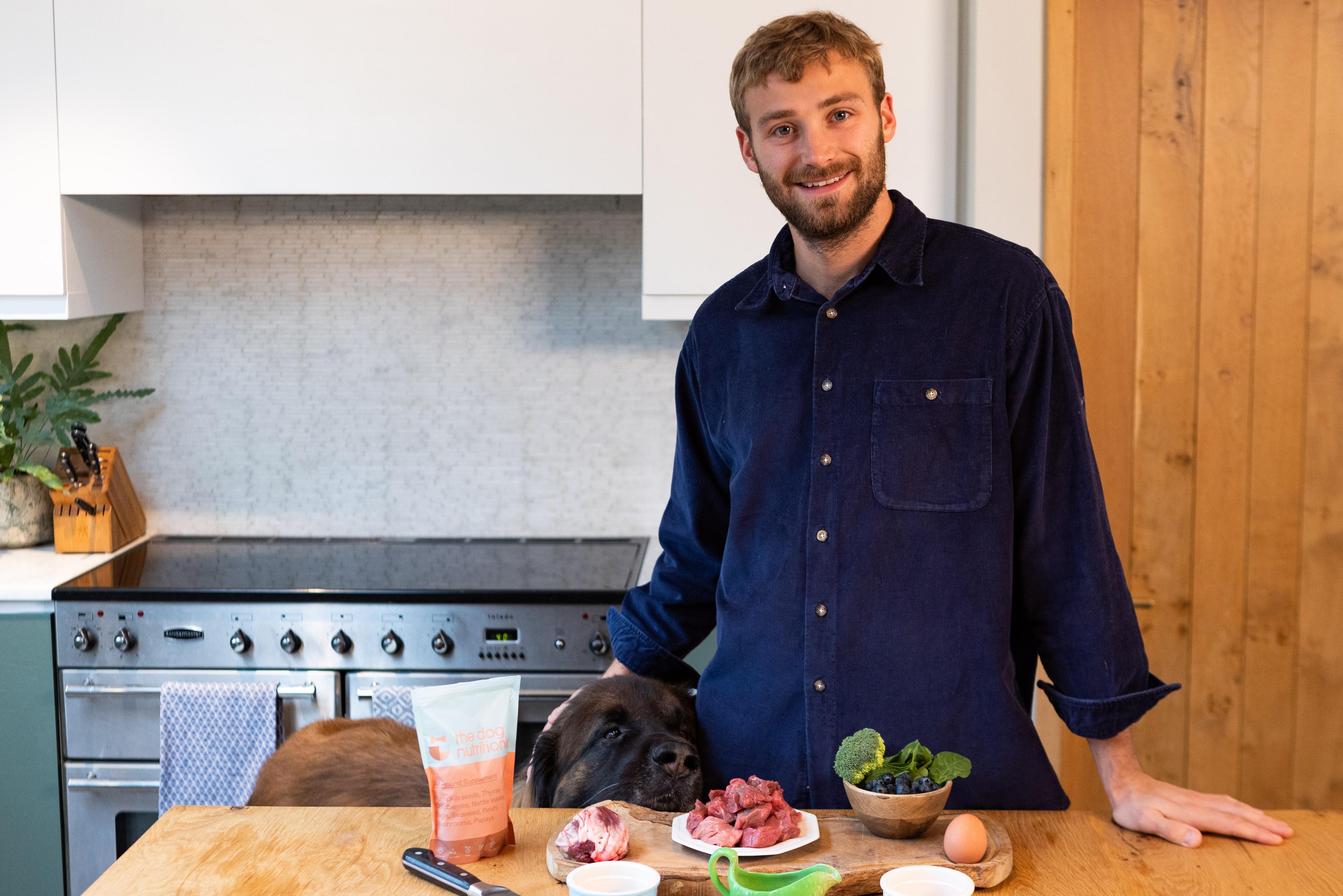


46
For more information check out www.thedognutritionist.com Thank you.
www.thedognutritionist.com help@thedognutritionist.com








































